Hydrophobic and Tribological Properties of Biomimetic Interfaces
Abstract
1. Introduction
2. Hydrophobic Biomimetic Interfaces
2.1. Theory of Hydrophobicity
2.2. Experiments of Hydrophobicity
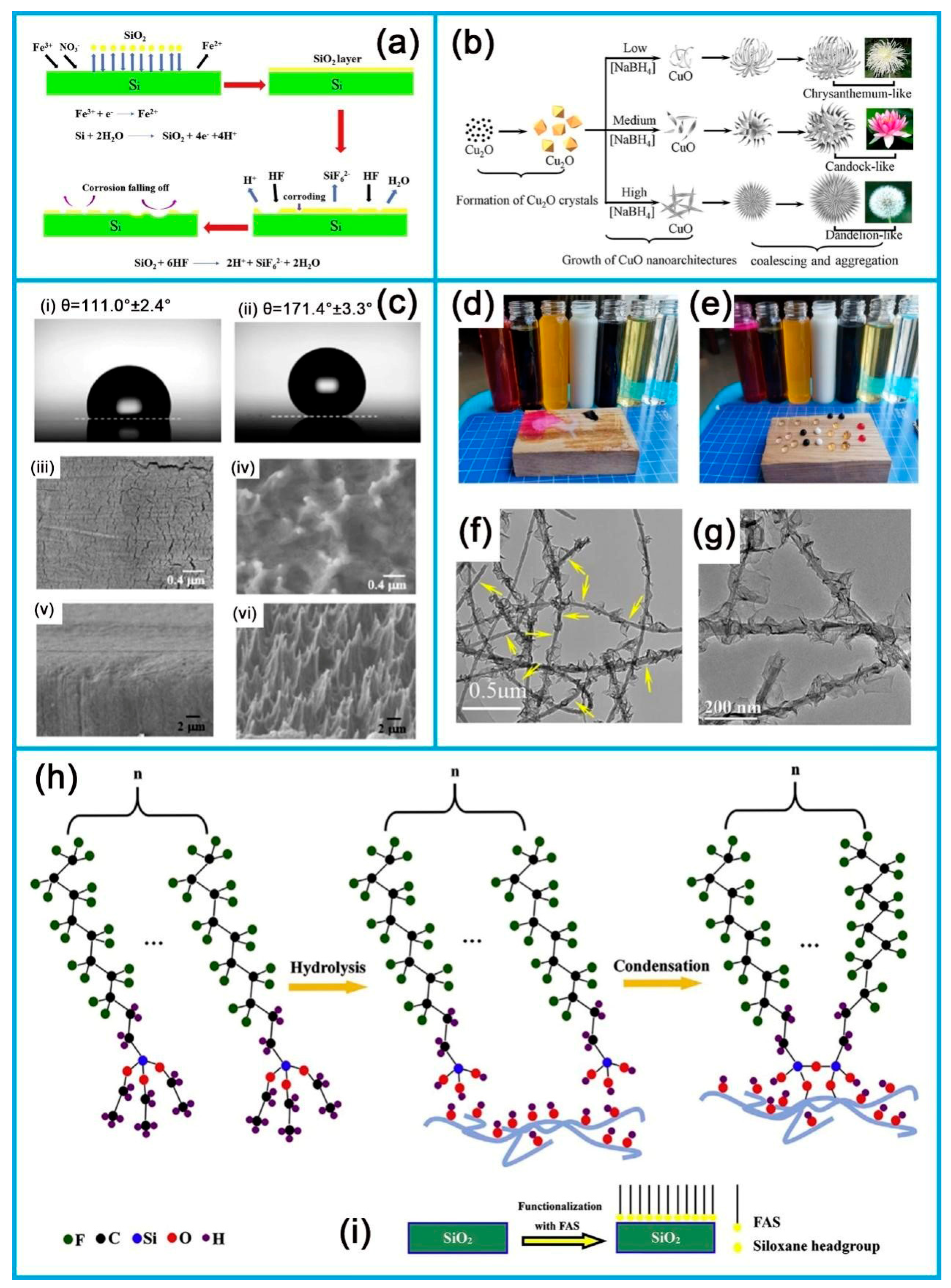
2.3. Hydrophobic Mechanism
| Matrix | Low-Surface-Energy Material | Fabrication Technique | Major Properties | Summary | Morphology | Ref |
|---|---|---|---|---|---|---|
| Glass wafer | - | Sol-gel | Controllable wettability | CA = 161.2 ± 1.3° |  | [106] |
| sc-Si | Fe(NO3)3 | Wet etching | Hydrophobicity | CA = 144.5° | 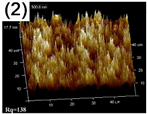 | [134] |
| Si (100) substrate | - | RF-PECVD | Waterproofness, self-cleaning property and reusability | CA = 158° |  | [136] |
| Cu foil | Sodium laurate | Direct crystallization | Hydrophobicity | CA = 156 ± 2° |  | [137] |
| BCPs | - | RAFT | Hydrophobicity | CA = 128° |  | [155] |
| MgAl-LDH | Melamine sponge | In situ growing | Superhydrophobicity | CA = 163.2° | 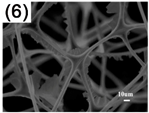 | [158] |
| Cu foil | - | Facile hydrothermal | Antireflection and hydrophobicity | CA = 142.6° | 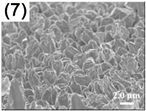 | [165] |
| The structured aluminum | - | Femtosecond laser raster Scanning | Superhydrophobicity | CA = 153 ± 0.8° | 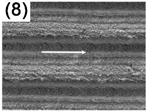 | [168] |
2.4. Hydrophobic Applications
2.5. Bionic Interface Technology
| Bionic Object | Matrix | Preparative Technique | Result | Structure | Comparison |
|---|---|---|---|---|---|
| Rose petal-like microscale structure [227] | 304 stainless-steel | Laser etching and chemical vapor deposition | WCA ~ 133.5° | 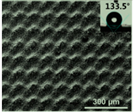 | Simple process, low cost, and fast etching rate |
| Mussel-inspired [224] | Polypropylene plate | Adhesion technology and thiol chemistry | SWCA ~ 39° | 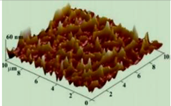 | Simple and versatile |
| Butterfly wings, peacock tail feathers, and dolphin skins [235] | 3 mol% yttria-stabilized tetragonal zirconia polycrystal | Laser ablation method | WCA ˃ 150° COF ~ 0.179 |  | High machining efficiency and noncontact |
| Sharklet [225,231] | Commercial photosensitive acrylic resin | 3D printing | WCA ~ 61° COF ~ 0.17 |  | High efficiency, high manufacturing flexibility, well machining repeatability, high accuracy, and strongenvironmental adaptability |
| Al2O3/TiC ceramic | Laser surface texturing | WCA ~ 76.3° COF ~ 0.07 | 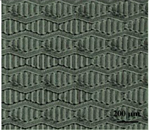 | ||
| Lotus leaf [229] | UV-curable waterborne polyurethane acrylate | UV nanoimprint lithography | After wear WCA ˃ 150° | 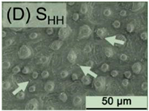 | Efficient, environmentally friendly, energy-saving, enabling, and economical |
3. Biomimetic Interfaces in the Tribology
3.1. Dry Friction
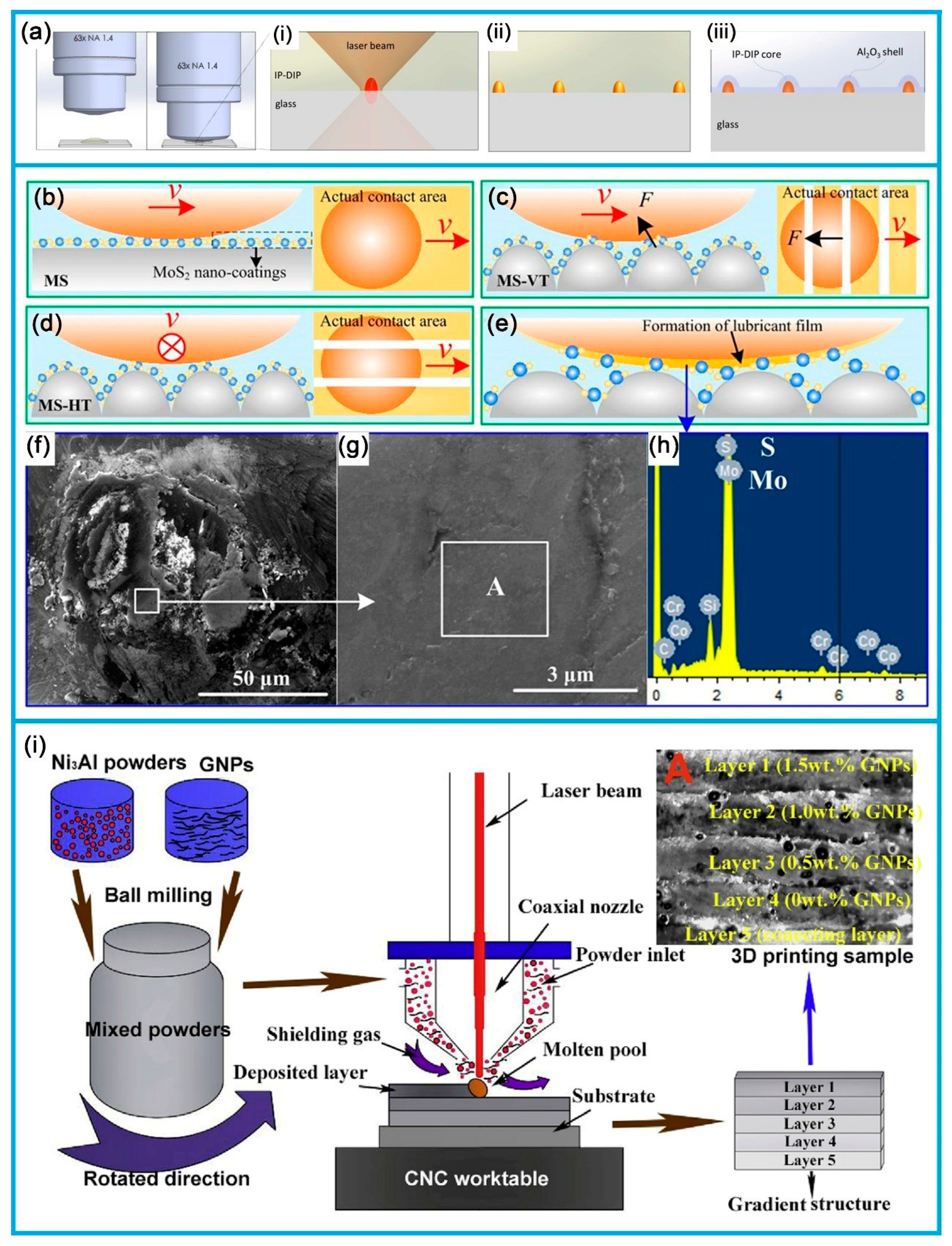
3.2. Wet Friction
3.3. Ultra-Lubrication
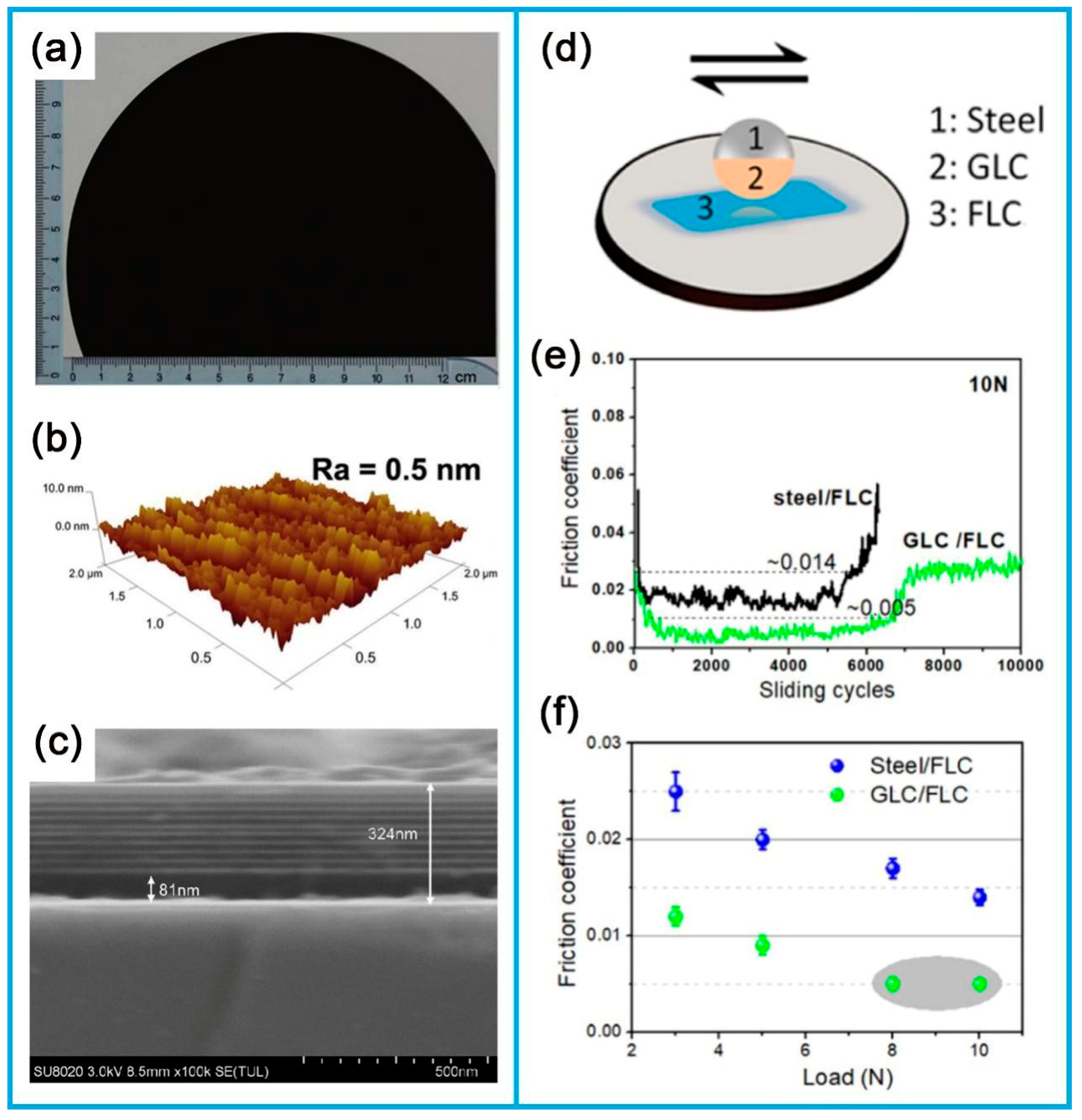
3.4. Application of Frictions
| Matrix/Struct-Ure | Reinforcement | Tested Conditions | Tribological Results | |
|---|---|---|---|---|
| COF | Wear | |||
| SiC-nanoceramic | CNT [290] | Si3N4 ball (ball-on-three-disks, 150 N, 100 rpm, paraffin oil) | 0.12 | Wear rate: ~9.6 × 10−10 mm3/mN |
| AZ61 magnesium alloy | CNTs [257] | block (ring on block, 50 N, 140 rpm speed, 10 min) | ~0.22 | Volumetric loss: 0.96 mm3 |
| PTFE coating | CF [259] | 1045 steel ball (ball-on-disk, 10 N, 200 rpm, 30 min) | ~0.175 | Wear rate: ~2.74 × 10−4 mm3/Nm |
| PTFE | CNF [260] | 45 steel (ring-on-ring, 200 N, 30 min, 25 °C, 1.4 m/s, humidity: 50 ± 5%) | ~0.16 | Volumetric loss: ~9.7 mm3 |
| PTFE | SWCNT [287] | 304 stainless steel (linear reciprocating friction, 250 N, 50.8 mm/s, 25.4 mm) | ~0.19 | Wear rate: ~3.0 × 10−5 mm3/Nm |
| UHMWPE | CNT [288] | EN-31 forged steel ball (ball-on-disc, 5 N, 200 rpm, 120 min) | ~0.12 | Wear rate: ~9.46 × 10−5 mm3/Nm |
| Dimple texture | Nano-MoS2 [263] | Nodular cast iron pin (pin-on-disc, 10 N, 0.05 m/s, 20 °C) | 0.48 | Wear rate: ~3.5 × 10−6 mm3/Nm |
| Pit texture | Graphene [270] | Si3N4 ball (pin-on-disk, 1 N, 180 rpm, RT) | ~0.06 | Wear life: 12,000 cycles |
| The convex textures | Copper nanoparticles [284] | Stainless steel ball (pin-on-disc, 20 N, oil lubrication, RT) | ~0.12 | NM |
| Network structure | SiCnws [285] | Steel ball (ball-on-disks, 120 min, lubricating oil, RT) | ~0.22971 | Wear rate: ~0.08171 × 10−6 mm3/Nm |
| Onion structure | Nanodiamond particles [308] | Al2O3 ball (2.89 Gpa, 1800s) | ~0.009 | NM |
| Hierarchical structure | Graphene sheets and MoS2 [310] | Al2O3 ball (ball-on-disc, 10 N, 0.2 m/s, RT) | ~0.004 | NM |
4. Conclusions and Outlooks
Author Contributions
Funding
Conflicts of Interest
References
- Liu, Y.; Qi, Y.; Sun, H.; Han, N.; Zhou, J.; Song, J.; Zou, M. Bionic design of thin-walled tubes inspired by the vascular structure of bamboo. Thin-Walled Struct. 2023, 186, 110689. [Google Scholar] [CrossRef]
- Zhang, R.; Sun, X.; Han, D.; Zhang, R.; Zhang, H.; Ma, J.; Wen, L.; Zou, M. A bionic mechanical foot with adaptive variable postures travelling on sand. J. Terramechanics 2023, 107, 61–74. [Google Scholar] [CrossRef]
- Jiang, J.; Yao, Z.; Li, Z.; Lu, Y.; Yao, Q.; Gong, X.; Fu, X.; Duan, F. Recognition method for the bionic camouflage cetacean whistle modulated by CPMFSK signals. Appl. Acoust. 2023, 207, 109326. [Google Scholar] [CrossRef]
- Yan, Z.; Yang, H.; Zhang, W.; Lin, F.; Gong, Q.; Zhang, Y. Bionic fish tail design and trajectory tracking control. Ocean Eng. 2022, 257, 111659. [Google Scholar] [CrossRef]
- Sun, S.; Zhi, Y.; Li, X.; Guo, Z. Numerical investigation on cavitating wake dynamic of a propeller with bionic tubercle leading-edge. Ocean Eng. 2022, 252, 111240. [Google Scholar] [CrossRef]
- Liu, H.; Wang, X.; Lu, Y.; Yan, Y.; Zhao, W.; Wu, X.; Zhang, Z. Application and optimal design of the bionic guide vane to improve the safety serve performances of the reactor coolant pump. Nucl. Eng. Technol. 2022, 54, 2491–2509. [Google Scholar] [CrossRef]
- Huang, S.; Qiu, H.; Wang, Y. Aerodynamic performance of horizontal axis wind turbine with application of dolphin head-shape and lever movement of skeleton bionic airfoils. Energy Convers. Manag. 2022, 267, 115803. [Google Scholar] [CrossRef]
- Wang, B.; Zhu, J.; Xie, T.; Fu, L.; Yang, W.; Li, D.; Zhou, L. A new Cu-W bionic shell pearl multilayer structure. Surf. Coat. Technol. 2023, 461, 129433. [Google Scholar] [CrossRef]
- Wang, Z.; Meng, L.; Li, X.; Li, J. Fabrication of core-shell Ni@C@PANI nanocomposite-based bionic coating with multi-bands EWM adaptability inspired by porous structure of pachliopta aristolochiae wings. Prog. Org. Coat. 2023, 179, 107498. [Google Scholar] [CrossRef]
- Sun, X.; Xu, J.; Qi, Z. Mechanism properties of a bird-neck bionic rigid-flexible structure. Fundam. Res. 2022, in press. [Google Scholar] [CrossRef]
- Wang, L. A critical review on robust self-cleaning property of lotus leaf. Soft Matter 2023, 19, 1058–1075. [Google Scholar] [CrossRef] [PubMed]
- Wan, J.; Li, H.; Xu, L.; Yan, J.; Liao, Y.; Wang, X. PDA/PEI-induced in-situ growth of a lotus leaf-like TiO2 nanoparticle film on N-halamine cotton fabric for photocatalytic, self-cleaning and efficient antibacterial performance. Cellulose 2023, 30, 3953–3972. [Google Scholar] [CrossRef]
- Sun, J.; Bauman, L.; Yu, L.; Zhao, B. Gecko-and-inchworm-inspired untethered soft robot for climbing on walls and ceilings. Cell Rep. Phys. Sci. 2023, 4, 101241. [Google Scholar] [CrossRef]
- Duan, J.; Wang, B.; Ji, B.; Sun, W.; Wang, Z.; Dai, Z. Control Strategy of Stable Climbing Mechanics for Gecko-Inspired Robot on Vertical Arc Surface. IEEE Instrum. Meas. Mag. 2023, 26, 48–56. [Google Scholar] [CrossRef]
- Zhang, Z.; Chu, Z.; Zhang, B.; Cui, J. Inchworm-Gecko Inspired Robot with Adhesion State Detection and CPG Control. In Cognitive Systems and Information Processing; Sun, F., Cangelosi, A., Zhang, J., Yu, Y., Liu, H., Fang, B., Eds.; Springer Nature: Singapore, 2023; pp. 70–84. [Google Scholar]
- Sharma, S.K.; Grewal, H.S. Tribological Behavior of Bioinspired Surfaces. Biomimetics 2023, 8, 62. [Google Scholar] [CrossRef] [PubMed]
- Dean, B.; Bhushan, B. Shark-skin surfaces for fluid-drag reduction in turbulent flow: A review. Philosophical Transactions of the Royal Society A: Mathematical. Phys. Eng. Sci. 2010, 368, 4775–4806. [Google Scholar]
- Puukilainen, E.; Koponen, H.-K.; Xiao, Z.; Suvanto, S.; Pakkanen, T.A. Nanostructured and chemically modified hydrophobic polyolefin surfaces. Colloids Surf. A Physicochem. Eng. Asp. 2006, 287, 175–181. [Google Scholar] [CrossRef]
- Zheng, R.; Tshabalala, M.A.; Li, Q.; Wang, H. Construction of hydrophobic wood surfaces by room temperature deposition of rutile (TiO2) nanostructures. Appl. Surf. Sci. 2015, 328, 453–458. [Google Scholar] [CrossRef]
- Barthlott, W.; Neinhuis, C. Purity of the sacred lotus, or escape from contamination in biological surfaces. Planta 1997, 202, 1–8. [Google Scholar] [CrossRef]
- Schulz, B.; Frommer, W.B. A plant ABC transporter takes the lotus seat. Science 2004, 306, 622–625. [Google Scholar] [CrossRef][Green Version]
- Su, H.; Luan, B.; Dong, Y.; Zhang, X.; Liu, Z.; Wang, C. Lotus leaf-like Ni-decorated SiC with combined superhydrophobicity and enhanced microwave absorption performance. Colloids Surf. A Physicochem. Eng. Asp. 2022, 650, 129602. [Google Scholar] [CrossRef]
- Yoo, D.; Kim, S.J.; Joung, Y.; Jang, S.; Choi, D.; Kim, D.S. Lotus leaf-inspired droplet-based electricity generator with low-adhesive superhydrophobicity for a wide operational droplet volume range and boosted electricity output. Nano Energy 2022, 99, 107361. [Google Scholar] [CrossRef]
- Klicova, M.; Oulehlova, Z.; Klapstova, A.; Hejda, M.; Krejcik, M.; Novak, O.; Mullerova, J.; Erben, J.; Rosendorf, J.; Palek, R.; et al. Biomimetic hierarchical nanofibrous surfaces inspired by superhydrophobic lotus leaf structure for preventing tissue adhesions. Mater. Des. 2022, 217, 110661. [Google Scholar] [CrossRef]
- Yang, J.; Long, F.; Wang, R.; Zhang, X.; Yang, Y.; Hu, W.; Liu, L. Design of mechanical robust superhydrophobic Cu coatings with excellent corrosion resistance and self-cleaning performance inspired by lotus leaf. Colloids Surf. A Physicochem. Eng. Asp. 2021, 627, 127154. [Google Scholar] [CrossRef]
- Shao, Y.; Zhao, J.; Fan, Y.; Wan, Z.; Lu, L.; Zhang, Z.; Ming, W.; Ren, L. Shape memory superhydrophobic surface with switchable transition between “Lotus Effect” to “Rose Petal Effect”. Chem. Eng. J. 2020, 382, 122989. [Google Scholar] [CrossRef]
- Ebert, D.; Bhushan, B. Wear-resistant rose petal-effect surfaces with superhydrophobicity and high droplet adhesion using hydrophobic and hydrophilic nanoparticles. J. Colloid Interface Sci. 2012, 384, 182–188. [Google Scholar] [CrossRef] [PubMed]
- Gao, D.; Xin, B.; Zhang, Z.; Wang, Y.; Yu, W.; Hou, C.; Jiang, Y.; Huang, P.; Xu, W. Study on the Preparation of Special Wettability Nanofiber Membranes and Its Application in Oil-water Separation. J. Phys. Conf. Ser. 2023, 2437, 12037. [Google Scholar] [CrossRef]
- Nosonovsky, M.; Bhushan, B. Superhydrophobic surfaces and emerging applications: Non-adhesion, energy, green engineering. Curr. Opin. Colloid Interface Sci. 2009, 14, 270–280. [Google Scholar] [CrossRef]
- Huang, F.; Motealleh, B.; Wang, D.; Cornelius, C.J. Tailoring intrinsic hydrophobicity and surface energy on rough surface via low-T Cassie–Wenzel wetting transition method. AIChE J. 2023, 69, e17908. [Google Scholar] [CrossRef]
- Drelich, J.; Marmur, A. Physics and applications of superhydrophobic and superhydrophilic surfaces and coatings. Surf. Innov. 2014, 2, 211–227. [Google Scholar] [CrossRef]
- Yin, K.; Yang, S.; Dong, X.; Chu, D.; Duan, J.-A.; He, J. Ultrafast achievement of a superhydrophilic/hydrophobic janus foam by femtosecond laser ablation for directional water transport and efficient fog harvesting. ACS Appl. Mater. Interfaces 2018, 10, 31433–31440. [Google Scholar] [CrossRef] [PubMed]
- Feng, L.; Zhang, Y.; Xi, J.; Zhu, Y.; Wang, N.; Xia, F.; Jiang, L. Petal effect: A superhydrophobic state with high adhesive force. Langmuir 2008, 24, 4114–4119. [Google Scholar] [CrossRef]
- Parker, A.R.; Lawrence, C.R. Water capture by a desert beetle. Nature 2001, 414, 33–34. [Google Scholar] [CrossRef]
- Qin, S.; Shi, X.; Xue, Y.; Zhang, K.; Huang, Q.; Wu, C.; Ma, J.; Shu, J. Coupling effects of bionic textures with composite solid lubricants to improve tribological properties of TC4 alloy. Tribol. Int. 2022, 173, 107691. [Google Scholar] [CrossRef]
- Wang, Z.; Fu, Q.; Wood, R.J.; Wu, J.; Wang, S. Influence of bionic non-smooth surface texture on tribological characteristics of carbon-fiber-reinforced polyetheretherketone under seawater lubrication. Tribol. Int. 2020, 144, 106100. [Google Scholar] [CrossRef]
- Yang, K.; Ma, H.; Zhao, W.; Li, X.; Liu, H. Investigation of the preparation and tribological behavior of a frictional interface covered with sinusoidal microchannels containing SnAgCu and Ti3SiC2. Tribol. Int. 2020, 150, 106368. [Google Scholar] [CrossRef]
- Zhou, J.; Zhao, G.; Li, J.; Chen, J.; Zhang, S.; Wang, J.; Walsh, F.C.; Wang, S.; Xue, Y. Electroplating of non-fluorinated superhydrophobic Ni/WC/WS2 composite coatings with high abrasive resistance. Appl. Surf. Sci. 2019, 487, 1329–1340. [Google Scholar] [CrossRef]
- Liu, X.; Liang, Y.; Zhou, F.; Liu, W. Extreme wettability and tunable adhesion: Biomimicking beyond nature? Soft Matter 2012, 8, 2070–2086. [Google Scholar] [CrossRef]
- Jucius, D.; Guobienė, A.; Grigaliūnas, V. Surface texturing of polytetrafluoroethylene by hot embossing. Appl. Surf. Sci. 2010, 256, 2164–2169. [Google Scholar] [CrossRef]
- Khan, A.; Wang, Z.; Sheikh, M.A.; Whitehead, D.J.; Li, L. Laser micro/nano patterning of hydrophobic surface by contact particle lens array. Appl. Surf. Sci. 2011, 258, 774–779. [Google Scholar] [CrossRef]
- Marchetto, D.; Rota, A.; Calabri, L.; Gazzadi, G.C.; Menozzi, C.; Valeri, S. Hydrophobic effect of surface patterning on Si surface. Wear 2010, 268, 488–492. [Google Scholar] [CrossRef]
- Zhao, W.; Wang, L.; Xue, Q. Design and fabrication of nanopillar patterned Au textures for improving nanotribological performance. ACS Appl. Mater. Interfaces 2010, 2, 788–794. [Google Scholar] [CrossRef] [PubMed]
- Zhang, X.; Zhong, X.; Meng, X.; Yi, G.; Jia, J. Adhesion and friction studies of nano-textured surfaces produced by self-assembling Au nanoparticles on silicon wafers. Tribol. Lett. 2012, 46, 65–73. [Google Scholar] [CrossRef]
- Ding, Q.; Wang, L.; Wang, Y.; Wang, S.; Hu, L.; Xue, Q. Improved tribological behavior of DLC films under water lubrication by surface texturing. Tribol. Lett. 2011, 41, 439–449. [Google Scholar] [CrossRef]
- Man, H.C.; Chiu, K.; Guo, X. Laser surface micro-drilling and texturing of metals for improvement of adhesion joint strength. Appl. Surf. Sci. 2010, 256, 3166–3169. [Google Scholar] [CrossRef]
- Luo, K.; Wang, C.; Li, Y.; Luo, M.; Huang, S.; Hua, X.; Lu, J. Effects of laser shock peening and groove spacing on the wear behavior of non-smooth surface fabricated by laser surface texturing. Appl. Surf. Sci. 2014, 313, 600–606. [Google Scholar] [CrossRef]
- Maksimov, S. An integral method to study textures of nanosized crystallites in an electron microscope column. Inorg. Mater. 2009, 45, 1598–1609. [Google Scholar] [CrossRef]
- Daniel, M.-C.; Astruc, D. Gold nanoparticles: Assembly; supramolecular chemistry; quantum-size-related properties, and applications toward biology, catalysis, and nanotechnology. Chem. Rev. 2004, 104, 293–346. [Google Scholar] [CrossRef]
- Hu, H.; Chen, H.; Yu, S.; Chen, J.; Wu, G.; Meng, F.; Qu, J.; Li, Y.; Zhu, H.; Xiao, J.Q. Textured Co nanowire arrays with controlled magnetization direction. J. Magn. Magn. Mater. 2005, 295, 257–262. [Google Scholar] [CrossRef]
- Wang, S.; Pang, X.; Guo, X.; Cheng, C.; Liu, Y.; Zhang, Y. Mechanical and tribological properties of WC particles reinforced Cu-20Zn matrix composites. Powder Technol. 2022, 406, 117571. [Google Scholar] [CrossRef]
- Yang, K.; Zhang, F.; Chen, Y.; Zhang, H.; Xiong, B.; Chen, H. Recent progress on carbon-based composites in multidimensional applications. Compos. Part A Appl. Sci. Manuf. 2022, 157, 106906. [Google Scholar] [CrossRef]
- Chen, Y.; Yang, K.; Lin, H.; Zhang, F.; Xiong, B.; Zhang, H.; Zhang, C. Important contributions of multidimensional nanoadditives on the tribofilms: From formation mechanism to tribological behaviors. Compos. Part B Eng. 2022, 234, 109732. [Google Scholar] [CrossRef]
- Chouquet, C.; Gavillet, J.; Ducros, C.; Sanchette, F. Effect of DLC surface texturing on friction and wear during lubricated sliding. Mater. Chem. Phys. 2010, 123, 367–371. [Google Scholar] [CrossRef]
- Tang, W.; Zhou, Y.; Zhu, H.; Yang, H. The effect of surface texturing on reducing the friction and wear of steel under lubricated sliding contact. Appl. Surf. Sci. 2013, 273, 199–204. [Google Scholar] [CrossRef]
- Yang, K.; Ma, H.; Cao, S.; Li, X.; Li, A.; Cao, Z. Analysis of friction interfaces with sinusoidal microchannels and the hybrid lubrication mechanisms of a tribo-film. Appl. Surf. Sci. 2020, 525, 146502. [Google Scholar] [CrossRef]
- Yang, K.; Zhang, F.; Ma, Y.; Cao, Z.; Ma, H.; Zhang, C.; Liang, Y. Simple synthesis of the composite coating and the lubrication mechanisms of the spherical SnAgCu–Al2O3. Wear 2020, 462–463, 203514. [Google Scholar] [CrossRef]
- Yang, K.; Ma, H.; Wang, L.; Cao, Z.; Zhang, C. Analysis of self-regulating tribological functions of the MgAl microchannels prepared in the Ti alloys. Tribol. Int. 2021, 154, 106717. [Google Scholar] [CrossRef]
- Hirano, M.; Shinjo, K. Atomistic locking and friction. Phys. Rev. B 1990, 41, 11837. [Google Scholar] [CrossRef]
- Matta, C.; Joly-Pottuz, L.; Bouchet, M.D.B.; Martin, J.; Kano, M.; Zhang, Q. Goddard III, Superlubricity and tribochemistry of polyhydric alcohols. Phys. Rev. B 2008, 78, 85436. [Google Scholar] [CrossRef]
- Yang, J.; Liu, Z.; Grey, F.; Xu, Z.; Li, X.; Liu, Y.; Urbakh, M.; Cheng, Y.; Zheng, Q. Observation of high-speed microscale superlubricity in graphite. Phys. Rev. Lett. 2013, 110, 255504. [Google Scholar] [CrossRef]
- Zhou, S.; Wang, W.; Xu, X. Robust superhydrophobic magnetic melamine sponge inspired by lotus leaf surface for efficient continuous oil-water separation. Sep. Purif. Technol. 2023, 311, 123251. [Google Scholar] [CrossRef]
- Ji, X.-Y.; Wang, J.-W.; Feng, X.-Q. Role of flexibility in the water repellency of water strider legs: Theory and experiment. Phys. Rev. E 2012, 85, 21607. [Google Scholar] [CrossRef] [PubMed]
- Xu, J.; Liu, W.; Shang, W.; Chen, J.; Lian, J. Drop impact dynamic and directional transport on dragonfly wing surface. Friction 2023, 11, 737–747. [Google Scholar] [CrossRef]
- Fang, Y.; Sun, G.; Bi, Y.; Zhi, H. Multiple-dimensional micro/nano structural models for hydrophobicity of butterfly wing surfaces and coupling mechanism. Sci. Bull. 2015, 60, 256–263. [Google Scholar] [CrossRef]
- Li, J.; Guo, Z.; Liu, W. Biomimetic Superhydrophobic Materials Construct from Binary Structure: A Review on Design. Properties, and Applications. Adv. Mater. Interfaces 2023, 10, 2201847. [Google Scholar] [CrossRef]
- Chen, X.; Wang, M.; Xin, Y.; Huang, Y. One-step fabrication of self-cleaning superhydrophobic surfaces: A combined experimental and molecular dynamics study. Surf. Interfaces 2022, 31, 102022. [Google Scholar] [CrossRef]
- Xue, C.-H.; Jia, S.-T.; Zhang, J.; Ma, J.-Z. Large-area fabrication of superhydrophobic surfaces for practical applications: An overview. Sci. Technol. Adv. Mater. 2010, 11, 33002. [Google Scholar] [CrossRef]
- Wang, H.; Zhu, Y.; Hu, Z.; Zhang, X.; Wu, S.; Wang, R.; Zhu, Y. A novel electrodeposition route for fabrication of the superhydrophobic surface with unique self-cleaning, mechanical abrasion and corrosion resistance properties. Chem. Eng. J. 2016, 303, 37–47. [Google Scholar] [CrossRef]
- Scarratt, L.R.; Hoatson, B.S.; Wood, E.S.; Hawkett, B.S.; Neto, C. Durable superhydrophobic surfaces via spontaneous wrinkling of teflon AF. ACS Appl. Mater. Interfaces 2016, 8, 6743–6750. [Google Scholar] [CrossRef]
- Cully, P.; Karasu, F.; Müller, L.; Jauzein, T.; Leterrier, Y. Self-cleaning and wear-resistant polymer nanocomposite surfaces. Surf. Coat. Technol. 2018, 348, 111–120. [Google Scholar] [CrossRef]
- Yang, Z.; Wang, L.; Sun, W.; Li, S.; Zhu, T.; Liu, W.; Liu, G. Superhydrophobic epoxy coating modified by fluorographene used for anti-corrosion and self-cleaning. Appl. Surf. Sci. 2017, 401, 146–155. [Google Scholar] [CrossRef]
- Guo, Z.; Chen, X.; Li, J.; Liu, J.-H.; Huang, X.-J. ZnO/CuO hetero-hierarchical nanotrees array: Hydrothermal preparation and self-cleaning properties. Langmuir 2011, 27, 6193–6200. [Google Scholar] [CrossRef] [PubMed]
- Wu, X.; Silberschmidt, V.V.; Hu, Z.-T.; Chen, Z. When superhydrophobic coatings are icephobic: Role of surface topology. Surf. Coat. Technol. 2019, 358, 207–214. [Google Scholar] [CrossRef]
- Wang, Z.; Sun, Z.; Chen, X.; Zou, W.; Jiang, X.; Sun, D.; Yu, M. Color fastness enhancement of dyed wood by Si-sol@PDMS based superhydrophobic coating. Colloids Surf. A Physicochem. Eng. Asp. 2022, 651, 129701. [Google Scholar] [CrossRef]
- Zhao, J.; Sun, R.; Liu, C.; Mo, J. Application of ZnO/epoxy resin superhydrophobic coating for buoyancy enhancement and drag reduction. Colloids Surf. A Physicochem. Eng. Asp. 2022, 651, 129714. [Google Scholar] [CrossRef]
- Cao, L.; Liu, J.; Xu, S.; Xia, Y.; Huang, W.; Li, Z. Inherent superhydrophobicity of Sn/SnOx films prepared by surface self-passivation of electrodeposited porous dendritic Sn. Mater. Res. Bull. 2013, 48, 4804–4810. [Google Scholar] [CrossRef]
- Bhattacharya, P.; Gohil, S.; Mazher, J.; Ghosh, S.; Ayyub, P. Universal, geometry-driven hydrophobic behaviour of bare metal nanowire clusters. Nanotechnology 2008, 19, 75709. [Google Scholar] [CrossRef] [PubMed]
- Yang, Z.; Liu, X.; Tian, Y. Insights into the wettability transition of nanosecond laser ablated surface under ambient air exposure. J. Colloid Interface Sci. 2019, 533, 268–277. [Google Scholar] [CrossRef] [PubMed]
- Zhang, Z.; Gu, Q.; Jiang, W.; Zhu, H.; Xu, K.; Ren, Y.; Xu, C. Achieving of bionic super-hydrophobicity by electrodepositing nano-Ni-pyramids on the picosecond laser-ablated micro-Cu-cone surface. Surf. Coat. Technol. 2019, 363, 170–178. [Google Scholar] [CrossRef]
- Lin, Y.; Li, T.; Liu, S.; Shi, Q.; Xu, K.; Zhang, Z.; Wu, J. Interfacial mechanical properties of tetrahydrofuran hydrate-solid surfaces: Implications for hydrate management. J. Colloid Interface Sci. 2023, 629, 326–335. [Google Scholar] [CrossRef]
- Jiang, L.; Wang, R.; Yang, B.; Li, T.; Tryk, D.; Fujishima, A.; Hashimoto, K.; Zhu, D. Binary cooperative complementary nanoscale interfacial materials. Pure Appl. Chem. 2000, 72, 73–81. [Google Scholar] [CrossRef]
- Lu, Y. Temperature Dependent Anti-Icing Performance of the Microstructure Surface: Wettability Change and Ice Nucleation. Coatings 2023, 13, 1485. [Google Scholar] [CrossRef]
- Koch, B.M.; Amirfazli, A.; Elliott, J.A. Modeling and measurement of contact angle hysteresis on textured high-contact-angle surfaces. J. Phys. Chem. C 2014, 118, 18554–18563. [Google Scholar] [CrossRef]
- Blake, T.; Fernández-Toledano, J.; De Coninck, J. A possible way to extract the dynamic contact angle at the molecular scale from that measured experimentally. J. Colloid Interface Sci. 2023, 629, 660–669. [Google Scholar] [CrossRef]
- Kumar, P.; Harvie, D.J. Contact Angle Hysteresis on Rough Surfaces Part II: Energy Dissipation via Microscale Interface Dynamics. arXiv 2023, arXiv:2303.09149. [Google Scholar]
- Iliev, S.; Pesheva, N.; Iliev, P. Contact angle hysteresis on random self-affine rough surfaces in Wenzel’s wetting regime: Numerical study. Phys. Rev. E 2023, 107, 24802. [Google Scholar] [CrossRef]
- Ford, R.; Furmidge, C. Studies at phase interfaces: II. The stabilization of water-in-oil emulsions using oil-soluble emulsifiers. J. Colloid Interface Sci. 1966, 22, 331–341. [Google Scholar] [CrossRef]
- Furmidge, C. Studies at phase interfaces. I. The sliding of liquid drops on solid surfaces and a theory for spray retention. J. Colloid Sci. 1962, 17, 309–324. [Google Scholar]
- Chen, W.; Fadeev, A.Y.; Hsieh, M.C.; Öner, D.; Youngblood, J.; McCarthy, T.J. Ultrahydrophobic and ultralyophobic surfaces: Some comments and examples. Langmuir 1999, 15, 3395–3399. [Google Scholar] [CrossRef]
- Mao-Gang, G.; Yuan-Yue, L.; Xiao-Liang, X. A new model for the formation of contact angle and contact angle hysteresis. Chin. Phys. B 2010, 19, 106801. [Google Scholar] [CrossRef]
- Young, T., III. An essay on the cohesion of fluids. Philos. Trans. R. Soc. Lond. 1805, 95, 65–87. [Google Scholar]
- Wenzel, R.N. Resistance of solid surfaces to wetting by water. Ind. Eng. Chem. 1936, 28, 988–994. [Google Scholar] [CrossRef]
- Bhushan, B. Bioinspired structured surfaces. Langmuir 2012, 28, 1698–1714. [Google Scholar] [CrossRef] [PubMed]
- Bhushan, B.; Jung, Y.C.; Koch, K. Micro-, nano-and hierarchical structures for superhydrophobicity, self-cleaning and low adhesion. Philosophical Transactions of the Royal Society A: Mathematical. Phys. Eng. Sci. 2009, 367, 1631–1672. [Google Scholar]
- Myronyuk, O.; Baklan, D.; Vasilyev, G.S.; Rodin, A.M.; Vanagas, E. Wetting patterns of liquid-repellent femtosecond laser textured aluminum surfaces. Coatings 2022, 12, 1852. [Google Scholar] [CrossRef]
- Ran, C.; Ding, G.; Liu, W.; Deng, Y.; Hou, W. Wetting on nanoporous alumina surface: Transition between Wenzel and Cassie states controlled by surface structure. Langmuir 2008, 24, 9952–9955. [Google Scholar] [CrossRef] [PubMed]
- Cassie, A.; Baxter, S. Wettability of porous surfaces. Trans. Faraday Soc. 1944, 40, 546–551. [Google Scholar] [CrossRef]
- Milne, A.J.B.; Amirfazli, A. The Cassie equation: How it is meant to be used. Adv. Colloid Interface Sci. 2012, 170, 48–55. [Google Scholar] [CrossRef]
- Cai, T.-M.; Jia, Z.-H.; Yang, H.-N.; Wang, G. Investigation of Cassie-Wenzel wetting transitions on microstructured surfaces. Colloid Polym. Sci. 2016, 294, 833–840. [Google Scholar] [CrossRef]
- Murakami, D.; Jinnai, H.; Takahara, A. Wetting transition from the Cassie–Baxter state to the Wenzel state on textured polymer surfaces. Langmuir 2014, 30, 2061–2067. [Google Scholar] [CrossRef]
- Nosonovsky, M.; Bhushan, B. Patterned nonadhesive surfaces: Superhydrophobicity and wetting regime transitions. Langmuir 2008, 24, 1525–1533. [Google Scholar] [CrossRef] [PubMed]
- Jung, Y.C.; Bhushan, B. Dynamic effects of bouncing water droplets on superhydrophobic surfaces. Langmuir 2008, 24, 6262–6269. [Google Scholar] [CrossRef] [PubMed]
- Nosonovsky, M.; Bhushan, B. Energy transitions in superhydrophobicity: Low adhesion, easy flow and bouncing. J. Phys. Condens. Matter 2008, 20, 395005. [Google Scholar] [CrossRef]
- Krupenkin, T.N.; Taylor, J.A.; Schneider, T.M.; Yang, S. From rolling ball to complete wetting: The dynamic tuning of liquids on nanostructured surfaces. Langmuir 2004, 20, 3824–3827. [Google Scholar] [CrossRef] [PubMed]
- Feng, X.; Feng, L.; Jin, M.; Zhai, J.; Jiang, L.; Zhu, D. Reversible super-hydrophobicity to super-hydrophilicity transition of aligned ZnO nanorod films. J. Am. Chem. Soc. 2004, 126, 62–63. [Google Scholar] [CrossRef] [PubMed]
- Bormashenko, E.; Pogreb, R.; Whyman, G.; Erlich, M. Cassie—Wenzel wetting transition in vibrating drops deposited on rough surfaces: Is the dynamic cassie—Wenzel wetting transition a 2d or 1d affair? Langmuir 2007, 23, 6501–6503. [Google Scholar] [CrossRef] [PubMed]
- Lafuma, A.; Quéré, D. Superhydrophobic states. Nat. Mater. 2003, 2, 457–460. [Google Scholar] [CrossRef]
- Extrand, C.W. Model for contact angles and hysteresis on rough and ultraphobic surfaces. Langmuir 2002, 18, 7991–7999. [Google Scholar] [CrossRef]
- Patankar, N.A. Transition between superhydrophobic states on rough surfaces. Langmuir 2004, 20, 7097–7102. [Google Scholar] [CrossRef]
- Gao, N.; Yan, Y. Modeling superhydrophobic contact angles and wetting transition. J. Bionic Eng. 2009, 6, 335–340. [Google Scholar] [CrossRef]
- Nosonovsky, M.; Bhushan, B. Stochastic model for metastable wetting of roughness-induced superhydrophobic surfaces. Microsyst. Technol. 2006, 12, 231–237. [Google Scholar] [CrossRef]
- Nosonovsky, M.; Bhushan, B. Roughness optimization for biomimetic superhydrophobic surfaces. Microsyst. Technol. 2005, 11, 535–549. [Google Scholar] [CrossRef]
- Ishino, C.; Okumura, K. Nucleation scenarios for wetting transition on textured surfaces: The effect of contact angle hysteresis. EPL (Europhys. Lett.) 2006, 76, 464. [Google Scholar] [CrossRef][Green Version]
- Bormashenko, E.; Bormashenko, Y.; Stein, T.; Whyman, G.; Pogreb, R.; Barkay, Z. Environmental scanning electron microscopy study of the fine structure of the triple line and Cassie—Wenzel wetting transition for sessile drops deposited on rough polymer substrates. Langmuir 2007, 23, 4378–4382. [Google Scholar] [CrossRef]
- Bhushan, B.; Jung, Y.C. Natural and biomimetic artificial surfaces for superhydrophobicity, self-cleaning, low adhesion, and drag reduction. Prog. Mater. Sci. 2011, 56, 1–108. [Google Scholar] [CrossRef]
- Quan, Y.-Y.; Chen, Z.; Lai, Y.; Huang, Z.-S.; Li, H. Recent advances in fabricating durable superhydrophobic surfaces: A review in the aspects of structures and materials. Mater. Chem. Front. 2021, 5, 1655–1682. [Google Scholar] [CrossRef]
- Parvate, S.; Dixit, P.; Chattopadhyay, S. Superhydrophobic surfaces: Insights from theory and experiment. J. Phys. Chem. B 2020, 124, 1323–1360. [Google Scholar] [CrossRef]
- Zeng, Q.; Zhou, H.; Huang, J.; Guo, Z. Review on the recent development of durable superhydrophobic materials for practical applications. Nanoscale 2021, 13, 11734–11764. [Google Scholar] [CrossRef]
- Wang, D.; Sun, Q.; Hokkanen, M.J.; Zhang, C.; Lin, F.-Y.; Liu, Q.; Zhu, S.-P.; Zhou, T.; Chang, Q.; He, B. Design of robust superhydrophobic surfaces. Nature 2020, 582, 55–59. [Google Scholar] [CrossRef]
- Li, J.; Du, F.; Liu, X.; Jiang, Z.; Ren, L. Superhydrophobicity of Bionic Alumina Surfaces Fabricated by Hard Anodizing. J. Bionic Eng. 2011, 8, 369–374. [Google Scholar] [CrossRef]
- Zhao, D.; Tian, Q.; Wang, M.; Jin, Y. Study on the Hydrophobic Property of Shark-Skin-Inspired Micro-Riblets. J. Bionic Eng. 2014, 11, 296–302. [Google Scholar] [CrossRef]
- Najafian, H.; Manteghi, F.; Beshkar, F.; Salavati-Niasari, M. Efficient degradation of azo dye pollutants on ZnBi38O58 nanostructures under visible-light irradiation. Sep. Purif. Technol. 2018, 195, 30–36. [Google Scholar] [CrossRef]
- Sun, X.; Yang, S.; Xue, B.; Huo, K.; Li, X.; Tian, Y.; Liao, X.; Xie, L.; Qin, S.; Xu, K. Super-hydrophobic poly (lactic acid) by controlling the hierarchical structure and polymorphic transformation. Chem. Eng. J. 2020, 397, 125297. [Google Scholar] [CrossRef]
- Wang, X.; He, Y.; Liu, X.; Zhu, J. Synthesis of hierarchical flower-like particles and its application as super-hydrophobic coating. Powder Technol. 2017, 319, 408–414. [Google Scholar] [CrossRef]
- Zhang, X.; Lin, D.; Liu, Z.; Yuan, S.; Wang, X.; Wang, H.; Wang, J. Fabrication of mechanically stable UV-curing superhydrophobic coating by interfacial strengthening strategy. J. Alloys Compd. 2021, 886, 161156. [Google Scholar] [CrossRef]
- Shi, L.; Hu, J.; Lin, X.; Fang, L.; Wu, F.; Xie, J.; Meng, F. A robust superhydrophobic PPS-PTFE/SiO2 composite coating on AZ31 Mg alloy with excellent wear and corrosion resistance properties. J. Alloys Compd. 2017, 721, 157–163. [Google Scholar] [CrossRef]
- Yu, Z.; Zhou, C.; Liu, R.; Zhang, Q.; Gong, J.; Tao, D.; Ji, Z. Fabrication of superhydrophobic surface with enhanced corrosion resistance on H62 brass substrate. Colloids Surf. A Physicochem. Eng. Asp. 2020, 589, 124475. [Google Scholar] [CrossRef]
- Peng, K.; Hu, J.; Yan, Y.; Wu, Y.; Fang, H.; Xu, Y.; Lee, S.; Zhu, J. Fabrication of single-crystalline silicon nanowires by scratching a silicon surface with catalytic metal particles. Adv. Funct. Mater. 2006, 16, 387–394. [Google Scholar] [CrossRef]
- Werner, J.H.; Dassow, R.; Rinke, T.; Köhler, J.; Bergmann, R. From polycrystalline to single crystalline silicon on glass. Thin Solid Film. 2001, 383, 95–100. [Google Scholar] [CrossRef]
- Nositschka, W.; Beneking, C.; Voigt, O.; Kurz, H. Texturisation of multicrystalline silicon wafers for solar cells by reactive ion etching through colloidal masks. Sol. Energy Mater. Sol. Cells 2003, 76, 155–166. [Google Scholar] [CrossRef]
- Macdonald, D.; Cuevas, A.; Kerr, M.J.; Samundsett, C.; Ruby, D.; Winderbaum, S.; Leo, A. Texturing industrial multicrystalline silicon solar cells. Sol. Energy 2004, 76, 277–283. [Google Scholar] [CrossRef]
- Niinobe, D.; Morikawa, H.; Hiza, S.; Sato, T.; Matsuno, S.; Fujioka, H.; Katsura, T.; Okamoto, T.; Hamamoto, S.; Ishihara, T. Large-size multi-crystalline silicon solar cells with honeycomb textured surface and point-contacted rear toward industrial production. Sol. Energy Mater. Sol. Cells 2011, 95, 49–52. [Google Scholar] [CrossRef]
- Chang, Z.; Sun, Y.; Xu, J.; Zong, X.; Tang, Q.; Guo, L.; Ren, L.; Cheng, W.-H. Hydrophobic nanostructures fabricated by ferric nitrate etching method on single crystalline silicon surface. Colloids Surf. A Physicochem. Eng. Asp. 2019, 583, 123999. [Google Scholar] [CrossRef]
- Kamal, S.A.A.; Ritikos, R.; Rahman, S.A. Wetting behaviour of carbon nitride nanostructures grown by plasma enhanced chemical vapour deposition technique. Appl. Surf. Sci. 2015, 328, 146–153. [Google Scholar] [CrossRef]
- Kamal, S.A.A.; Ritikos, R.; Rahman, S.A. Enhancement of self-cleaning properties and durability of super-hydrophobic carbon nitride nanostructures by post-annealing treatment. Surf. Coat. Technol. 2021, 409, 126912. [Google Scholar] [CrossRef]
- Fan, G.; Li, F. Effect of sodium borohydride on growth process of controlled flower-like nanostructured Cu2O/CuO films and their hydrophobic property. Chem. Eng. J. 2011, 167, 388–396. [Google Scholar] [CrossRef]
- Yin, Y.; Alivisatos, A.P. Colloidal nanocrystal synthesis and the organic–inorganic interface. Nature 2005, 437, 664–670. [Google Scholar] [CrossRef] [PubMed]
- Wang, D.; Lieber, C.M. Lieber, Nanocrystals branch out. Nat. Mater. 2003, 2, 355–356. [Google Scholar] [CrossRef] [PubMed]
- Wang, Z.L. Self-assembled nanoarchitectures of polar nanobelts/nanowires. J. Mater. Chem. 2005, 15, 1021–1024. [Google Scholar] [CrossRef]
- Burda, C.; Chen, X.; Narayanan, R.; El-Sayed, M.A. Chemistry and properties of nanocrystals of different shapes. Chem. Rev. 2005, 105, 1025–1102. [Google Scholar] [CrossRef]
- Xia, Y.; Yang, P.; Sun, Y.; Wu, Y.; Mayers, B.; Gates, B.; Yin, Y.; Kim, F.; Yan, H. One-dimensional nanostructures: Synthesis; characterization; applications. Adv. Mater. 2003, 15, 353–389. [Google Scholar] [CrossRef]
- Rhodes, K.H.; Davis, S.A.; Caruso, F.; Zhang, B.; Mann, S. Hierarchical assembly of zeolite nanoparticles into ordered macroporous monoliths using core—Shell building blocks. Chem. Mater. 2000, 12, 2832–2834. [Google Scholar] [CrossRef]
- Kim, F.; Kwan, S.; Akana, J.; Yang, P. Langmuir—Blodgett nanorod assembly. J. Am. Chem. Soc. 2001, 123, 4360–4361. [Google Scholar] [CrossRef]
- Fan, X.; Meng, X.M.; Zhang, X.H.; Shi, W.S.; Zhang, W.J.; Zapien, J.A.; Lee, C.S.; Lee, S.T. Dart-Shaped Tricrystal ZnS Nanoribbons. Angew. Chem. 2006, 118, 2630–2633. [Google Scholar] [CrossRef]
- Tiwari, J.N.; Tiwari, R.N.; Kim, K.S. Zero-dimensional, one-dimensional, two-dimensional and three-dimensional nanostructured materials for advanced electrochemical energy devices. Prog. Mater. Sci. 2012, 57, 724–803. [Google Scholar] [CrossRef]
- Chen, Z.; Cao, M. Synthesis, characterization, and hydrophobic properties of Bi2S3 hierarchical nanostructures. Mater. Res. Bull. 2011, 46, 555–562. [Google Scholar] [CrossRef]
- Park, B.; Hwang, W. A facile fabrication method for corrosion-resistant micro/nanostructures on stainless steel surfaces with tunable wettability. Scr. Mater. 2016, 113, 118–121. [Google Scholar] [CrossRef]
- Ryu, J.; Kim, K.; Park, J.; Hwang, B.G.; Ko, Y.; Kim, H.; Han, J.; Seo, E.; Park, Y.; Lee, S.J. Nearly perfect durable superhydrophobic surfaces fabricated by a simple one-step plasma treatment. Sci. Rep. 2017, 7, 1–8. [Google Scholar] [CrossRef] [PubMed]
- Yang, Y.; Shen, H.; Qiu, J. Fabrication of biomimetic robust self-cleaning superhydrophobic wood with canna-leaf-like micro/nanostructure through morph-genetic method improved water-, UV-, and corrosion resistance properties. J. Mol. Struct. 2020, 1219, 128616. [Google Scholar] [CrossRef]
- Meng, A.; Tian, W.; Wang, Y.; Zhang, M.; Li, Z.; Li, Q.; Tan, S. Wicker-like SiC@graphene multidimensional nanostructures and their robust stable super-hydrophobic property against harsh conditions for self-cleaning application. Mater. Charact. 2021, 179, 111389. [Google Scholar] [CrossRef]
- Zhao, J.; Li, Z.; Zhang, M.; Meng, A. Super-hydrophobic surfaces of SiO2-coated SiC nanowires: Fabrication, mechanism and ultraviolet-durable super-hydrophobicity. J. Colloid Interface Sci. 2015, 444, 33–37. [Google Scholar] [CrossRef]
- Chen, H.; Zheng, X.; Jiang, Q.; Li, X. Hydrophobic Modified Nanosized Crosslinked Polymer Microspheres. Asian J. Chem. 2014, 26, 5412–5414. [Google Scholar] [CrossRef]
- Haas, K.-H.; Rose, K. Hybrid inorganic/organic polymers with nanoscale building blocks: Precursors, processing, properties and applications. Rev. Adv. Mater. Sci. 2003, 5, 47–52. [Google Scholar]
- Ponnupandian, S.; Chakrabarty, A.; Mondal, P.; Hoogenboom, R.; Lowe, A.B.; Singha, N.K. POSS and fluorine containing nanostructured block copolymer; Synthesis via RAFT polymerization and its application as hydrophobic coating material. Eur. Polym. J. 2020, 131, 109679. [Google Scholar] [CrossRef]
- Sabbah, A.; Vandeparre, H.; Brau, F.; Damman, P. Self-Cleaning Surfaces Prepared By Microstructuring System. Phys. Procedia 2011, 21, 193–197. [Google Scholar] [CrossRef][Green Version]
- Leese, H.; Bhurtun, V.; Lee, K.P.; Mattia, D. Wetting behaviour of hydrophilic and hydrophobic nanostructured porous anodic alumina. Colloids Surf. A Physicochem. Eng. Asp. 2013, 420, 53–58. [Google Scholar] [CrossRef]
- He, R.; Liu, S.; Wang, R.; Fu, T.; Zhang, R.; Zhang, Q.; Zhou, Y. In situ modification of melamine sponge by MgAl-LDH with super-hydrophobicity and excellent harsh environment tolerance for high flux emulsion separation. Sep. Purif. Technol. 2022, 291, 120916. [Google Scholar] [CrossRef]
- Zhao, J.; Deng, Y.; Dai, M.; Wu, Y.; Ali, I.; Peng, C. Preparation of super-hydrophobic/super-oleophilic quartz sand filter for the application in oil-water separation. J. Water Process Eng. 2022, 46, 102561. [Google Scholar] [CrossRef]
- Lv, C.; Liao, X.; Zou, F.; Tang, W.; Xing, S.; Li, G. Generating porous polymer microspheres with cellular surface via a gas-diffusion confined scCO2 foaming technology to endow the super-hydrophobic coating with hierarchical roughness. Chem. Eng. J. 2022, 442, 136192. [Google Scholar] [CrossRef]
- Li, X.; Wang, J.; You, J.; Yu, P.; Li, X.; Xue, G.; Chen, H.; Xu, X.; van Agtmaal, S.; Alvarez, P.J.J. Hazardous waste dewatering and dry mass reduction through hydrophobic modification by a facile one-pot, alkali-assisted hydrothermal reaction. Water Res. 2019, 155, 225–232. [Google Scholar] [CrossRef]
- Wang, G.; Song, D.; Qiao, Y.; Cheng, J.; Liu, H.; Jiang, J.; Ma, A.; Ma, X. Developing super-hydrophobic and corrosion-resistant coating on magnesium-lithium alloy via one-step hydrothermal processing. J. Magnes. Alloys 2021, 11, 1422–1439. [Google Scholar] [CrossRef]
- Wang, G.; Jiang, J.; Qiao, Y.; Gu, L.; Klu, E.E.; Gong, X.; Ma, A.; Song, D. Enhanced super-hydrophobicity and corrosion resistance of the one-step hydrothermal synthesized coating on the Mg-9Li alloy: Role of the solid-solution treated substrate. J. Alloys Compd. 2022, 921, 166044. [Google Scholar] [CrossRef]
- Mezzourh, H.; Moumen, S.B.; Amjoud, M.; Mezzane, D.; El Amraoui, Y.; Marbati, B.; Lahmar, A.; Jouiad, M.; El Marssi, M. Effect of growth time on structural and surface properties of TiO2 nanostructures deposited by single-step hydrothermal method. Mater. Today Proc. 2022, 51, 2053–2058. [Google Scholar] [CrossRef]
- Li, M.; Su, Y.; Hu, J.; Yao, L.; Wei, H.; Yang, Z.; Zhang, Y. Hierarchically porous micro/nanostructured copper surfaces with enhanced antireflection and hydrophobicity. Appl. Surf. Sci. 2016, 361, 11–17. [Google Scholar] [CrossRef]
- Barthwal, S.; Lee, B.; Lim, S.-H. Fabrication of robust and durable slippery anti-icing coating on textured superhydrophobic aluminum surfaces with infused silicone oil. Appl. Surf. Sci. 2019, 496, 143677. [Google Scholar] [CrossRef]
- Tan, X.; Zhang, Y.; Liu, X.; Xi, S.; Yan, Z.; Liu, Z.; Shi, T.; Liao, G. Employing micro pyramidal holes and porous nanostructures for enhancing the durability of lubricant-infused surfaces in anti-icing. Surf. Coat. Technol. 2021, 405, 126568. [Google Scholar] [CrossRef]
- Yang, L.; Shen, X.; Yang, Q.; Liu, J.; Wu, W.; Li, D.; Du, J.; Zhang, B.; Fan, S. Fabrication of biomimetic anisotropic super-hydrophobic surface with rice leaf-like structures by femtosecond laser. Opt. Mater. 2021, 112, 110740. [Google Scholar] [CrossRef]
- Chen, H.; Zhang, P.; Zhang, L.; Liu, H.; Jiang, Y.; Zhang, D.; Han, Z.; Jiang, L. Continuous directional water transport on the peristome surface of Nepenthes alata. Nature 2016, 532, 85–89. [Google Scholar] [CrossRef] [PubMed]
- Liu, Y.; Zhang, K.; Yao, W.; Liu, J.; Han, Z.; Ren, L. Bioinspired structured superhydrophobic and superoleophilic stainless steel mesh for efficient oil-water separation. Colloids Surf. A Physicochem. Eng. Asp. 2016, 500, 54–63. [Google Scholar] [CrossRef]
- Liu, Y.; Liu, W.; Wang, G.; Huo, J.; Kong, H.; Wang, W.; Wang, D.; Song, Z. A facile one-step approach to superhydrophilic silica film with hierarchical structure using fluoroalkylsilane. Colloids Surf. A Physicochem. Eng. Asp. 2018, 539, 109–115. [Google Scholar] [CrossRef]
- Guo, Z.; Liu, W.; Su, B.-L. Superhydrophobic surfaces: From natural to biomimetic to functional. J. Colloid Interface Sci. 2011, 353, 335–355. [Google Scholar] [CrossRef] [PubMed]
- Hancock, M.J.; Sekeroglu, K.; Demirel, M.C. Bioinspired directional surfaces for adhesion, wetting, and transport. Adv. Funct. Mater. 2012, 22, 2223–2234. [Google Scholar] [CrossRef] [PubMed]
- Yan, Z.; Liang, X.; Cotton, I.; Emersic, C. Suppression of surface charge on micro-and nano-structured superhydrophobic silicone rubber. IEEE Trans. Dielectr. Electr. Insul. 2018, 25, 1095–1102. [Google Scholar] [CrossRef]
- Wang, G.; Zhou, J.; Wang, M.; Zhang, Y.; Zhang, Y.; He, Q. A superhydrophobic surface with aging resistance, excellent mechanical restorablity and droplet bounce properties. Soft Matter 2020, 16, 5514–5524. [Google Scholar] [CrossRef] [PubMed]
- Ogbonna, V.E.; Popoola, P.I.; Popoola, O.M.; Adeosun, S.O. A comparative study on the failure analysis of field failed high voltage composite insulator core rods and recommendation of composite insulators: A review. Eng. Fail. Anal. 2022, 138, 106369. [Google Scholar] [CrossRef]
- Francis, U.U.; Philip, A.N. Degradation of epoxy reinforced Banana fibers and eggshell particles hybrid composite high-voltage insulators via accelerated UV aging processes. Chem. Data Collect. 2022, 38, 100842. [Google Scholar] [CrossRef]
- Ibrahim, M.E.; Selim, F.; Abd-Elhady, A.M. Partial discharge performance improvement of covered conductor (CC)/high voltage insulator based electrical distribution systems. Electr. Power Syst. Res. 2022, 202, 107601. [Google Scholar] [CrossRef]
- Salem, A.A.; Abd-Rahman, R.; Ishak, M.T.B.; Lau, K.Y.; Abdul-Malek, Z.; Al-ameri, S.; Al-Gailani, S.A.; Ghoneim, S.S. Influence of contamination distribution in characterizing the flashover phenomenon on outdoor insulator. Ain Shams Eng. J. 2023, 14, 102249. [Google Scholar] [CrossRef]
- Li, Y.; Jin, H.; Nie, S.; Zhang, P.; Gao, N. Dynamic behavior of water droplets and flashover characteristics on a superhydrophobic silicone rubber surface. Appl. Phys. Lett. 2017, 110, 201602. [Google Scholar] [CrossRef]
- Lei, S.; Wang, F.; Fang, X.; Ou, J.; Li, W. Icing behavior of water droplets impinging on cold superhydrophobic surface. Surf. Coat. Technol. 2019, 363, 362–368. [Google Scholar] [CrossRef]
- Peng, W.; Gou, X.; Qin, H.; Zhao, M.; Zhao, X.; Guo, Z. Creation of a multifunctional superhydrophobic coating for composite insulators. Chem. Eng. J. 2018, 352, 774–781. [Google Scholar] [CrossRef]
- Peng, W.; Gou, X.; Qin, H.; Zhao, M.; Zhao, X.; Guo, Z. Robust Mg (OH) 2/epoxy resin superhydrophobic coating applied to composite insulators. Appl. Surf. Sci. 2019, 466, 126–132. [Google Scholar] [CrossRef]
- Chen, L.; Guo, F.; Yang, T.; Hu, T.; Bennett, P.; Yang, Q.; Liu, D. Aging characteristics and self-healing properties of laser-textured superhydrophobic silicone rubber for composite insulators. Polym. Degrad. Stab. 2021, 192, 109693. [Google Scholar] [CrossRef]
- Wang, G.; Li, A.; Li, K.; Zhao, Y.; Ma, Y.; He, Q. A fluorine-free superhydrophobic silicone rubber surface has excellent self-cleaning and bouncing properties. J. Colloid Interface Sci. 2021, 588, 175–183. [Google Scholar] [CrossRef] [PubMed]
- Li, A.; Wang, G.; Ma, Y.; Zhao, C.; Zhang, F.; He, Q.; Zhang, F. Study on preparation and properties of superhydrophobic surface of RTV silicone rubber. J. Mater. Res. Technol. 2021, 11, 135–143. [Google Scholar] [CrossRef]
- Boinovich, L.; Emelyanenko, A.M.; Pashinin, A.S. Analysis of long-term durability of superhydrophobic properties under continuous contact with water. ACS Appl. Mater. Interfaces 2010, 2, 1754–1758. [Google Scholar] [CrossRef]
- Chen, J.; Dou, R.; Cui, D.; Zhang, Q.; Zhang, Y.; Xu, F.; Zhou, X.; Wang, J.; Song, Y.; Jiang, L. Robust prototypical anti-icing coatings with a self-lubricating liquid water layer between ice and substrate. ACS Appl. Mater. Interfaces 2013, 5, 4026–4030. [Google Scholar] [CrossRef]
- Pike, W. Extreme warm frontal icing on 25 February 1994 causes an aircraft accident near Uttoxeter. Meteorol. Appl. 1995, 2, 273–279. [Google Scholar] [CrossRef]
- Wenxuan, Y.; Yuan, Y.; Guoyong, L.; Bing, Z.; Rongkai, Y. The anti-icing/frosting aluminum surface with hydrangea-like micro/nano structure prepared by chemical etching. Mater. Lett. 2018, 226, 4–7. [Google Scholar] [CrossRef]
- Kraj, A.G.; Bibeau, E.L. Phases of icing on wind turbine blades characterized by ice accumulation. Renew. Energy 2010, 35, 966–972. [Google Scholar] [CrossRef]
- Momen, G.; Jafari, R.; Farzaneh, M. Ice repellency behaviour of superhydrophobic surfaces: Effects of atmospheric icing conditions and surface roughness. Appl. Surf. Sci. 2015, 349, 211–218. [Google Scholar] [CrossRef]
- Kong, L.; Li, Y.; Kong, X.; Ji, Z.; Wang, X.; Zhang, X. A novel flexible and fluoride-free superhydrophobic thermal energy storage coating for photothermal energy conversion. Compos. Part B Eng. 2022, 232, 109588. [Google Scholar] [CrossRef]
- Zhang, Y.; Zhang, Z.; Yang, J.; Yue, Y.; Zhang, H. Fabrication of superhydrophobic surface on stainless steel by two-step chemical etching. Chem. Phys. Lett. 2022, 797, 139567. [Google Scholar] [CrossRef]
- Zhu, P.; Zhu, L.; Ge, F.; Wang, G.; Zeng, Z. Sprayable superhydrophobic coating with high mechanical/chemical robustness and anti-corrosion. Surf. Coat. Technol. 2022, 443, 128609. [Google Scholar] [CrossRef]
- Hellstén, P.P.; Salminen, J.M.; Jørgensen, K.S.; Nystén, T.H. Use of potassium formate in road winter deicing can reduce groundwater deterioration. Environ. Sci. Technol. 2005, 39, 5095–5100. [Google Scholar] [CrossRef] [PubMed]
- Yin, X.; Yang, K.; Zhang, H.; Xiong, B.; Duan, M.; Wang, M.; Hao, Y. Important Explorations on Surface Corrosion of the Copper Coins Sourced from the Qing Dynasty. Scanning 2022, 2022, 1647217. [Google Scholar] [CrossRef] [PubMed]
- Wang, G.; Shen, Y.; Tao, J.; Luo, X.; Jin, M.; Xie, Y.; Li, Z.; Guo, S. Facilely constructing micro-nanostructure superhydrophobic aluminum surface with robust ice-phobicity and corrosion resistance. Surf. Coat. Technol. 2017, 329, 224–231. [Google Scholar] [CrossRef]
- Zhou, H.; Jing, X.; Guo, Z. Excellent fog droplets collector via an extremely stable hybrid hydrophobic-hydrophilic surface and Janus copper foam integrative system with hierarchical micro/nanostructures. J. Colloid Interface Sci. 2020, 561, 730–740. [Google Scholar] [CrossRef]
- Shen, Y.; Wu, Y.; Tao, J.; Zhu, C.; Chen, H.; Wu, Z.; Xie, Y. Spraying fabrication of durable and transparent coatings for anti-icing application: Dynamic water repellency, icing delay, and ice adhesion. ACS Appl. Mater. Interfaces 2018, 11, 3590–3598. [Google Scholar] [CrossRef]
- Xiong, J.; Sarkar, D.K.; Chen, X.-G. Superhydrophobic honeycomb-like cobalt stearate thin films on aluminum with excellent anti-corrosion properties. Appl. Surf. Sci. 2017, 407, 361–370. [Google Scholar] [CrossRef]
- Ishizaki, T.; Saito, N. Rapid formation of a superhydrophobic surface on a magnesium alloy coated with a cerium oxide film by a simple immersion process at room temperature and its chemical stability. Langmuir 2010, 26, 9749–9755. [Google Scholar] [CrossRef] [PubMed]
- Ishizaki, T.; Masuda, Y.; Sakamoto, M. Corrosion resistance and durability of superhydrophobic surface formed on magnesium alloy coated with nanostructured cerium oxide film and fluoroalkylsilane molecules in corrosive NaCl aqueous solution. Langmuir 2011, 27, 4780–4788. [Google Scholar] [CrossRef] [PubMed]
- Wang, P.; Zhang, D.; Qiu, R.; Hou, B. Super-hydrophobic film prepared on zinc as corrosion barrier. Corros. Sci. 2011, 53, 2080–2086. [Google Scholar] [CrossRef]
- Liu, T.; Yin, Y.; Chen, S.; Chang, X.; Cheng, S. Super-hydrophobic surfaces improve corrosion resistance of copper in seawater. Electrochim. Acta 2007, 52, 3709–3713. [Google Scholar] [CrossRef]
- Ishizaki, T.; Sakamoto, M. Facile formation of biomimetic color-tuned superhydrophobic magnesium alloy with corrosion resistance. Langmuir 2011, 27, 2375–2381. [Google Scholar] [CrossRef] [PubMed]
- Wang, J.; Li, D.; Liu, Q.; Yin, X.; Zhang, Y.; Jing, X.; Zhang, M. Fabrication of hydrophobic surface with hierarchical structure on Mg alloy and its corrosion resistance. Electrochim. Acta 2010, 55, 6897–6906. [Google Scholar] [CrossRef]
- Liang, J.; Hu, Y.; Wu, Y.; Chen, H. Facile formation of superhydrophobic silica-based surface on aluminum substrate with tetraethylorthosilicate and vinyltriethoxysilane as co-precursor and its corrosion resistant performance in corrosive NaCl aqueous solution. Surf. Coat. Technol. 2014, 240, 145–153. [Google Scholar] [CrossRef]
- Zheng, S.; Li, C.; Fu, Q.; Xiang, T.; Hu, W.; Wang, J.; Ding, S.; Liu, P.; Chen, Z. Fabrication of a micro-nanostructured superhydrophobic aluminum surface with excellent corrosion resistance and anti-icing performance. Rsc Adv. 2016, 6, 79389–79400. [Google Scholar] [CrossRef]
- Seckler, D.W. World Water Demand and Supply, 1990 to 2025: Scenarios and Issues; International Water Management Institute (IWMI): Colombo, Sri Lanka, 1998; Volume 19. [Google Scholar]
- Seckler, D.; Barker, R.; Amarasinghe, U. Water scarcity in the twenty-first century. Int. J. Water Resour. Dev. 1999, 15, 29–42. [Google Scholar] [CrossRef]
- Chakraborti, R.K.; Kaur, J.; Kaur, H. Water shortage challenges and a way forward in India. J. -Am. Water Work. Assoc. 2019, 111, 42–49. [Google Scholar] [CrossRef]
- Zheng, Y.; Bai, H.; Huang, Z.; Tian, X.; Nie, F.-Q.; Zhao, Y.; Zhai, J.; Jiang, L. Directional water collection on wetted spider silk. Nature 2010, 463, 640–643. [Google Scholar] [CrossRef] [PubMed]
- Yang, J.-L.; Song, Y.-Y.; Zhang, X.; Zhang, Z.-Q.; Cheng, G.-G.; Liu, Y.; Lv, G.-J.; Ding, J.-N. Research progress of bionic fog collection surfaces based on special structures from natural organisms. RSC Adv. 2023, 13, 27839–27864. [Google Scholar] [CrossRef] [PubMed]
- Song, D.; Bhushan, B. Optimization of bioinspired triangular patterns for water condensation and transport. Philos. Trans. R. Soc. A 2019, 377, 20190127. [Google Scholar] [CrossRef] [PubMed]
- Peng, Y.; He, Y.; Yang, S.; Ben, S.; Cao, M.; Li, K.; Liu, K.; Jiang, L. Magnetically induced fog harvesting via flexible conical arrays. Adv. Funct. Mater. 2015, 25, 5967–5971. [Google Scholar] [CrossRef]
- Song, K.; Kim, G.; Oh, S.; Lim, H. Enhanced water collection through a periodic array of tiny holes in dropwise condensation. Appl. Phys. Lett. 2018, 112, 71602. [Google Scholar] [CrossRef]
- Zhong, L.; Zhu, H.; Wu, Y.; Guo, Z. Understanding how surface chemistry and topography enhance fog harvesting based on the superwetting surface with patterned hemispherical bulges. J. Colloid Interface Sci. 2018, 525, 234–242. [Google Scholar] [CrossRef] [PubMed]
- Andrews, H.; Eccles, E.; Schofield, W.; Badyal, J. Three-dimensional hierarchical structures for fog harvesting. Langmuir 2011, 27, 3798–3802. [Google Scholar] [CrossRef] [PubMed]
- Lu, Y.; Yu, L.; Zhang, Z.; Wu, S.; Li, G.; Wu, P.; Hu, Y.; Li, J.; Chu, J.; Wu, D. Biomimetic surfaces with anisotropic sliding wetting by energy-modulation femtosecond laser irradiation for enhanced water collection. RSC Adv. 2017, 7, 11170–11179. [Google Scholar] [CrossRef]
- Lu, Y. Superior lubrication properties of biomimetic surfaces with hierarchical structure. Tribol. Int. 2018, 119, 131–142. [Google Scholar] [CrossRef]
- Zhao, Y.; Su, Y.; Hou, X.; Hong, M. Directional sliding of water: Biomimetic snake scale surfaces. Opto-Electron. Adv. 2021, 4, 21000801–21000812. [Google Scholar] [CrossRef]
- Stratakis, E.; Bonse, J.; Heitz, J.; Siegel, J.; Tsibidis, G.D.; Skoulas, E.; Papadopoulos, A.; Mimidis, A.; Joel, A.C.; Comanns, P.; et al. Laser engineering of biomimetic surfaces. Mater. Sci. Eng. R Rep. 2020, 141, 100562. [Google Scholar] [CrossRef]
- Niu, Z.; Zhao, Y.; Sun, W.; Shi, S.; Gong, Y. Biomimetic surface modification of polypropylene by surface chain transfer reaction based on mussel-inspired adhesion technology and thiol chemistry. Appl. Surf. Sci. 2016, 386, 41–50. [Google Scholar] [CrossRef]
- He, B.; Du, Y.; Wang, B.; Wang, X.; Ye, Q.; Liu, S. Grafting embedded poly(ionic liquid) brushes on biomimetic sharklet resin surface for anti-biofouling applications. Prog. Org. Coat. 2021, 157, 106298. [Google Scholar] [CrossRef]
- Zhao, S.; Du, H.; Ma, Z.; Xiao, G.; Liu, J.; Jiang, Y.; Hu, S.; Zhao, H.; Wen, C.; Ren, L. Efficient fabrication of ternary coupling biomimetic superhydrophobic surfaces with superior performance of anti-wetting and self-cleaning by a simple two-step method. Mater. Des. 2022, 223, 111145. [Google Scholar] [CrossRef]
- Song, Y.; Liu, Y.; Jiang, H.; Zhang, Y.; Han, Z.; Ren, L. Biomimetic super hydrophobic structured graphene on stainless steel surface by laser processing and transfer technology. Surf. Coat. Technol. 2017, 328, 152–160. [Google Scholar] [CrossRef]
- Hwang, J.-J.; Wu, C.-Y.; Hung, Y.-H.; Li, M.-X.; Luo, K.-H.; Jia, H.-W.; Balitaan, J.N.I.; Lin, S.-R.; Yeh, J.-M. Biomimetic PMMA coating surface and its application on inhibition of bacterial attachment and anti-biofilm performance. Surf. Interfaces 2023, 36, 102548. [Google Scholar] [CrossRef]
- Zhang, H.; Gan, J.; Wu, Y.; Wu, Z. Biomimetic high water adhesion superhydrophobic surface via UV nanoimprint lithography. Appl. Surf. Sci. 2023, 633, 157610. [Google Scholar] [CrossRef]
- Wang, Z.; Han, L.; Zhou, Y.; Cai, J.; Sun, S.; Ma, J.; Wang, W.; Li, X.; Ma, L. The combination of a 3D-Printed porous Ti–6Al–4V alloy scaffold and stem cell sheet technology for the construction of biomimetic engineered bone at an ectopic site. Mater. Today Bio 2022, 16, 100433. [Google Scholar] [CrossRef] [PubMed]
- Li, X.; Deng, J.; Yue, H.; Ge, D.; Zou, X. Wear performance of electrohydrodynamically atomized WS2 coatings deposited on biomimetic shark-skin textured surfaces. Tribol. Int. 2019, 134, 240–251. [Google Scholar] [CrossRef]
- Deng, W.; Liu, Y.; Rui, Y.; Lu, G.; Liu, J. Construction of superhydrophobic surfaces via dual-scale modified particles and digital light processing 3D printing techniques. Prog. Org. Coat. 2023, 181, 107570. [Google Scholar] [CrossRef]
- Li, G.; Tan, L.; Ren, L.; Zheng, A.; Li, Y.; He, Z.; Wang, K.; Han, Z.; Liu, Q.; Wu, W.; et al. Biomimetic 4D printing of dome-shaped dynamic mechanical metamaterials. J. Mater. Res. Technol. 2023, 24, 4047–4059. [Google Scholar] [CrossRef]
- Pugliese, R.; Graziosi, S. Biomimetic scaffolds using triply periodic minimal surface-based porous structures for biomedical applications. SLAS Technol. 2023, 28, 165–182. [Google Scholar] [CrossRef] [PubMed]
- Xu, J.; Zhang, X.; Dai, J.; Yu, D.; Ji, M.; Chen, M. Biomimetic microtextured surfaces to improve tribological and antibacterial behaviors of 3Y-TZP ceramics. J. Mater. Res. Technol. 2023, 23, 1360–1374. [Google Scholar] [CrossRef]
- Ismail, M.F.; Azmi, W.H.; Mamat, R.; Ali, H.M. Thermal and Tribological Properties Enhancement of PVE Lubricant Modified with SiO2 and TiO2 Nanoparticles Additive. Nanomaterials 2023, 13, 42. [Google Scholar] [CrossRef] [PubMed]
- Pan, C.; Gu, Y.; Chang, J.; Wang, C. Recent Patents on Friction and Wear Tester. Recent Pat. Eng. 2023, 17, 86–102. [Google Scholar] [CrossRef]
- Afonso, I.S.; Nobrega, G.; Lima, R.; Gomes, J.R.; Ribeiro, J.E. Conventional and Recent Advances of Vegetable Oils as Metalworking Fluids (MWFs): A Review. Lubricants 2023, 11, 160. [Google Scholar] [CrossRef]
- Xu, X.; Guo, P.; Tiong, L.C.O.; Zuo, X.; Li, X.; Lee, K.-R.; Cui, P.; Ke, P.; Wang, A. Role of dimple textured surface on tribological properties of Ti/Al-codoped diamond-like carbon films. Thin Solid Film. 2020, 708, 138136. [Google Scholar] [CrossRef]
- Tong, J.; Liu, S.; Peng, R.; Sun, H.; Jiang, S. Development of a micro/nano composite super-hydrophobic silicon surface with nail-shaped texture/dual self-assembly monolayers and its wetting behavior. Appl. Surf. Sci. 2021, 544, 148803. [Google Scholar] [CrossRef]
- Hamilton, D.B.; Walowit, J.A.; Allen, C.M. A Theory of Lubrication by Microirregularities. J. Basic Eng. 1966, 88, 177–185. [Google Scholar] [CrossRef]
- Gyawali, G.; Joshi, B.; Tripathi, K.; Kim, S.-H.; Lee, S.W. Effect of microtexturing on tribological performance of Ni/Ni–SiC composite coatings. Surf. Eng. 2015, 31, 701–707. [Google Scholar] [CrossRef]
- Vlădescu, S.-C.; Medina, S.; Olver, A.V.; Pegg, I.G.; Reddyhoff, T. The transient friction response of a laser-textured, reciprocating contact to the entrainment of individual pockets. Tribol. Lett. 2016, 62, 19. [Google Scholar] [CrossRef]
- Xu, D.; Wu, W.; Malhotra, R.; Chen, J.; Lu, B.; Cao, J. Mechanism investigation for the influence of tool rotation and laser surface texturing (LST) on formability in single point incremental forming. Int. J. Mach. Tools Manuf. 2013, 73, 37–46. [Google Scholar] [CrossRef]
- Nakano, M.; Korenaga, A.; Korenaga, A.; Miyake, K.; Murakami, T.; Ando, Y.; Usami, H.; Sasaki, S. Applying micro-texture to cast iron surfaces to reduce the friction coefficient under lubricated conditions. Tribol. Lett. 2007, 28, 131–137. [Google Scholar] [CrossRef]
- Maldonado-Cortés, D.; Peña-Parás, L.; Barrios-Saldaña, V.; Cruz-Bañuelos, J.S.; Adamiak, M. Synergistic effect on the tribological properties of tool steel through the use of laser surface texturing channels and nanoparticles. Wear 2019, 426–427, 1354–1361. [Google Scholar] [CrossRef]
- Fleming, R.A.; Zou, M. The effects of confined core volume on the mechanical behavior of Al/a-Si core-shell nanostructures. Acta Mater. 2017, 128, 149–159. [Google Scholar] [CrossRef]
- Steck, J.G.; Afshar-Mohajer, M.; Sun, Q.; Meng, X.; Zou, M. Fabrication and tribological characterization of deformation-resistant nano-textured surfaces produced by two-photon lithography and atomic layer deposition. Tribol. Int. 2019, 132, 75–84. [Google Scholar] [CrossRef]
- Qian, M.; Xu, X.; Qin, Z.; Yan, S. Silicon carbide whiskers enhance mechanical and anti-wear properties of PA6 towards potential applications in aerospace and automobile fields. Compos. Part B Eng. 2019, 175, 107096. [Google Scholar] [CrossRef]
- Suarez, S.; Rosenkranz, A.; Gachot, C.; Mücklich, F. Enhanced tribological properties of MWCNT/Ni bulk composites–Influence of processing on friction and wear behaviour. Carbon 2014, 66, 164–171. [Google Scholar] [CrossRef]
- Reinert, L.; Suárez, S.; Rosenkranz, A. Tribo-mechanisms of carbon nanotubes: Friction and wear behavior of CNT-reinforced nickel matrix composites and CNT-coated bulk nickel. Lubricants 2016, 4, 11. [Google Scholar] [CrossRef]
- Li, C.; Wang, Y.; Pan, Z. Wear resistance enhancement of electroless nanocomposite coatings via incorporation of alumina nanoparticles prepared by milling. Mater. Des. 2013, 47, 443–448. [Google Scholar] [CrossRef]
- Gu, D.; Zhang, H.; Dai, D.; Xia, M.; Hong, C.; Poprawe, R. Laser additive manufacturing of nano-TiC reinforced Ni-based nanocomposites with tailored microstructure and performance. Compos. Part B Eng. 2019, 163, 585–597. [Google Scholar] [CrossRef]
- Alizadeh, M.; Safaei, H. Characterization of Ni-Cu matrix, Al2O3 reinforced nano-composite coatings prepared by electrodeposition. Appl. Surf. Sci. 2018, 456, 195–203. [Google Scholar] [CrossRef]
- Yang, K.; Shi, X.; Zou, J.; Shen, Q.; Zhai, W.; Huang, Y. The study of the preparation and tribological behavior of TiAl matrix composites containing 1 wt% multi-walled carbon nanotubes. RSC Adv. 2016, 6, 29334–29341. [Google Scholar] [CrossRef]
- Deore, H.A.; Mishra, J.; Rao, A.G.; Mehtani, H.; Hiwarkar, V.D. Effect of filler material and post process ageing treatment on microstructure, mechanical properties and wear behaviour of friction stir processed AA 7075 surface composites. Surf. Coat. Technol. 2019, 374, 52–64. [Google Scholar] [CrossRef]
- Huang, S.J.; Abbas, A.; Ballóková, B. Effect of CNT on microstructure, dry sliding wear and compressive mechanical properties of AZ61 magnesium alloy. J. Mater. Res. Technol. 2019, 8, 4273–4286. [Google Scholar] [CrossRef]
- Chen, W.X.; Li, F.; Han, G.; Xia, J.B.; Wang, L.Y.; Tu, J.P.; Xu, Z.D. Tribological behavior of carbon-nanotube-filled PTFE composites. Tribol. Lett. 2003, 15, 275–278. [Google Scholar] [CrossRef]
- Wu, H.; Zhu, L.N.; Yue, W.; Fu, Z.Q.; Kang, J.J. Wear-resistant and hydrophobic characteristics of PTFE/CF composite coatings. Prog. Org. Coat. 2019, 128, 90–98. [Google Scholar] [CrossRef]
- Shi, Y.J.; Feng, X.; Wang, H.Y.; Lu, X.H. The effect of surface modification on the friction and wear behavior of carbon nanofiber-filled PTFE composites. Wear 2008, 264, 934–939. [Google Scholar] [CrossRef]
- Baghdadchi, A.; Movahedi, M. Consumable pin-friction stir spot welding of Al-Mg-Si alloy via pre-created hole and refilling: Microstructure evolution, defects, and shear/tensile failure load. Proceedings of the Institution of Mechanical Engineers. Part C J. Mech. Eng. Sci. 2023, 237, 3861–3870. [Google Scholar] [CrossRef]
- Dawari, C.K.; Haq, I.; Mönkkönen, K.; Suvanto, M.; Saarinen, J.J. Reduced sliding friction on flat and microstructured metal injection molded (MIM) WC-Co hard metals with MoS2 composite lubricants. Tribol. Int. 2021, 160, 107020. [Google Scholar] [CrossRef]
- Chen, L.; Liu, Z.; Shen, Q. Enhancing tribological performance by anodizing micro-textured surfaces with nano-MoS2 coatings prepared on aluminum-silicon alloys. Tribol. Int. 2018, 122, 84–95. [Google Scholar] [CrossRef]
- Li, X.; Deng, J.; Zhang, L.; Liu, Y.; Yue, H.; Duan, R.; Ge, D. Effect of surface textures and electrohydrodynamically atomized WS2 films on the friction and wear properties of ZrO2 coatings. Ceram. Int. 2019, 45, 1020–1030. [Google Scholar] [CrossRef]
- Shi, Z.; Shum, P.; Wasy, A.; Zhou, Z.; Li, L.K.-Y. Tribological performance of few layer graphene on textured M2 steel surfaces. Surf. Coat. Technol. 2016, 296, 164–170. [Google Scholar] [CrossRef]
- Xing, Y.; Wu, Z.; Yang, J.; Wang, X.; Liu, L. LIPSS combined with ALD MoS2 nano-coatings for enhancing surface friction and hydrophobic performances. Surf. Coat. Technol. 2020, 385, 125396. [Google Scholar] [CrossRef]
- Lu, G.; Shi, X.; Liu, X.; Zhou, H.; Chen, Y.; Yang, Z.; Huang, Y. Tribological performance of functionally gradient structure of graphene nanoplatelets reinforced Ni3Al metal matrix composites prepared by laser melting deposition. Wear 2019, 428–429, 417–429. [Google Scholar] [CrossRef]
- Liu, Q.-S.; Liu, X.-B.; Wang, G.; Liu, Y.-F.; Meng, Y.; Zhang, S.-H. Effect of Cu content on microstructure evolution and tribological behaviors of Ni60 composite coatings on 45# steel by laser cladding. Opt. Laser Technol. 2022, 156, 108549. [Google Scholar]
- Wu, H.Y.; Gu, Z.B.; Lei, Y.; Li, Q.F.; Gong, C.J.; Shao, S.F.; Rao, W.F. Effects of Pt cylinder arrays on macro-tribological properties of graphene and the SiO2/Si substrate. Wear 2015, 332–333, 1314–1321. [Google Scholar] [CrossRef]
- Chen, S.; Qian, G.; Yang, L. Precise control of surface texture on carbon film by ion etching through filter: Optimization of texture size for improving tribological behavior. Surf. Coat. Technol. 2019, 362, 105–112. [Google Scholar] [CrossRef]
- Ovchinnikov, S.; Kalashnikov, M. Structure and tribological properties of gradient-layered coatings (Ti, Al, Si, Cr, Mo, S) O, N. Surf. Coat. Technol. 2021, 408, 126807. [Google Scholar] [CrossRef]
- Wu, G.; Xu, C.; Xiao, G.; Yi, M.; Chen, Z. Structure design of Al2O3/TiC/CaF2 multicomponent gradient self-lubricating ceramic composite and its tribological behaviors. Ceram. Int. 2018, 44, 5550–5563. [Google Scholar] [CrossRef]
- Naebe, M.; Shirvanimoghaddam, K. Functionally graded materials: A review of fabrication and properties. Appl. Mater. Today 2016, 5, 223–245. [Google Scholar] [CrossRef]
- Carroll, B.E.; Otis, R.A.; Borgonia, J.P.; Suh, J.-O.; Dillon, R.P.; Shapiro, A.A.; Hofmann, D.C.; Liu, Z.-K.; Beese, A.M. Functionally graded material of 304L stainless steel and inconel 625 fabricated by directed energy deposition: Characterization and thermodynamic modeling. Acta Mater. 2016, 108, 46–54. [Google Scholar] [CrossRef]
- Fakhrabadi, E.A.; Stickel, J.J.; Liberatore, M.W. Frictional contacts between individual woody biomass particles under wet and dry conditions. Powder Technol. 2022, 408, 117719. [Google Scholar] [CrossRef]
- Tikanmäki, M.; Sainio, P. Experiments on friction of dry and wet ice. Cold Reg. Sci. Technol. 2020, 172, 102990. [Google Scholar] [CrossRef]
- Hamilton, D.; Walowit, J.; Allen, C. A Theory of Lubrication by Micro-irregularities. In Proceedings of the ASME-ASLE Lubrication Conference; 1966. [Google Scholar]
- Sreejith, P.; Ngoi, B. Dry machining: Machining of the future. J. Mater. Process. Technol. 2000, 101, 287–291. [Google Scholar] [CrossRef]
- Costa, H.; Hutchings, I. Hydrodynamic lubrication of textured steel surfaces under reciprocating sliding conditions. Tribol. Int. 2007, 40, 1227–1238. [Google Scholar] [CrossRef]
- Zhou, L.; Kato, K.; Umehara, N.; Miyake, Y. Nanometre scale island-type texture with controllable height and area ratio formed by ion-beam etching on hard-disk head sliders. Nanotechnology 1999, 10, 363. [Google Scholar] [CrossRef]
- Kovalchenko, A.; Ajayi, O.; Erdemir, A.; Fenske, G.; Etsion, I. The effect of laser surface texturing on transitions in lubrication regimes during unidirectional sliding contact. Tribol. Int. 2005, 38, 219–225. [Google Scholar] [CrossRef]
- Wu, B.; Qin, D.; Hu, J.; Liu, Y. Experimental data mining research on factors influencing friction coefficient of wet clutch. J. Tribol. 2021, 143, 121802. [Google Scholar] [CrossRef]
- Wang, X.; Liu, J.; Wang, Y.; Fu, Y. Fabrication of friction-reducing texture surface by selective laser melting of ink-printed (SLM-IP) copper (Cu) nanoparticles(NPs). Appl. Surf. Sci. 2017, 396, 659–664. [Google Scholar] [CrossRef]
- Wang, M.; Wang, X.; Liu, J.; Wei, J.; Shen, Z.; Wang, Y. 3-Dimensional ink printing of friction-reducing surface textures from copper nanoparticles. Surf. Coat. Technol. 2019, 364, 57–62. [Google Scholar] [CrossRef]
- Zhou, L.; Fu, Y.; Yin, T.; Tian, X.; Qi, L. Building the silicon carbide nanowire network on the surface of carbon fibers: Enhanced interfacial adhesion and high-performance wear resistance. Ceram. Int. 2019, 45, 22571–22577. [Google Scholar] [CrossRef]
- Moghadam, A.D.; Omrani, E.; Menezes, P.L.; Rohatgi, P.K. Mechanical and tribological properties of self-lubricating metal matrix nanocomposites reinforced by carbon nanotubes (CNTs) and graphene–A review. Compos. Part B Eng. 2015, 77, 402–420. [Google Scholar] [CrossRef]
- Vail, J.R.; Burris, D.L.; Sawyer, W.G. Multifunctionality of single-walled carbon nanotube–polytetrafluoroethylene nanocomposites. Wear 2009, 267, 619–624. [Google Scholar] [CrossRef]
- Kumar, R.M.; Sharma, S.K.; Kumar, B.V.M.; Lahiri, D. Effects of carbon nanotube aspect ratio on strengthening and tribological behavior of ultra high molecular weight polyethylene composite. Compos. Part A Appl. Sci. Manuf. 2015, 76, 62–72. [Google Scholar] [CrossRef]
- Otitoju, T.A.; Okoye, P.U.; Chen, G.; Li, Y.; Okoye, M.O.; Li, S. Advanced ceramic components: Materials; fabrication; applications. J. Ind. Eng. Chem. 2020, 85, 34–65. [Google Scholar] [CrossRef]
- Candelario, V.M.; Moreno, R.; Guiberteau, F.; Ortiz, A.L. Enhancing the sliding-wear resistance of SiC nanostructured ceramics by adding carbon nanotubes. J. Eur. Ceram. Soc. 2016, 36, 3083–3089. [Google Scholar] [CrossRef]
- Jung, Y.C.; Bhushan, B. Contact angle; adhesion, and friction properties of micro- and nanopatterned polymers for superhydrophobicity. Nanotechnol. Nanotechnol. 2006, 17, 4970. [Google Scholar] [CrossRef]
- Amiri, M.; Khonsari, M.M. On the thermodynamics of friction and wear—A review. Entropy 2010, 12, 1021–1049. [Google Scholar] [CrossRef]
- Scharf, T.; Prasad, S. Solid lubricants: A review. J. Mater. Sci. 2013, 48, 511–531. [Google Scholar] [CrossRef]
- Jin, B.; Zhao, J.; He, Y.; Chen, G.; Li, Y.; Zhang, C.; Luo, J. High-quality ultra-flat reduced graphene oxide nanosheets with super-robust lubrication performances. Chem. Eng. J. 2022, 438, 135620. [Google Scholar] [CrossRef]
- Chhattal, M.; Kaihuan, Y.; Ali, S.; Zambrano, D.F.; Rosenkranz, A.; Grützmacher, P.G.; Gong, Z.; Zhang, J. Solid Lubrication Performance of Ti2CTx Coatings with Reduced Friction and Extended Durability. Tribol. Int. 2024, 194, 109535. [Google Scholar] [CrossRef]
- Erdemir, A.; Ramirez, G.; Eryilmaz, O.L.; Narayanan, B.; Liao, Y.; Kamath, G.; Sankaranarayanan, S.K. Carbon-based tribofilms from lubricating oils. Nature 2016, 536, 67–71. [Google Scholar] [CrossRef] [PubMed]
- Zhang, B.; Xue, Y.; Qiang, L.; Gao, K.; Liu, Q.; Yang, B.; Liang, A.; Zhang, J. Assembling of carbon nanotubes film responding to significant reduction wear and friction on steel surface. Appl. Nanosci. 2017, 7, 835–842. [Google Scholar] [CrossRef]
- Ahmad, H.; Tamil, T. High responsivity, self-powered carbon–zinc oxide hybrid thin film based photodetector. Appl. Nanosci. 2018, 8, 1755–1765. [Google Scholar] [CrossRef]
- Scagliotti, M.; Salvato, M.; De Crescenzi, M.; Boscardin, M.; Castrucci, P. Influence of the contact geometry on single-walled carbon nanotube/Si photodetector response. Appl. Nanosci. 2018, 8, 1053–1058. [Google Scholar] [CrossRef]
- Robertson, J. Diamond-like amorphous carbon. Mater. Sci. Eng. R Rep. 2002, 37, 129–281. [Google Scholar] [CrossRef]
- Erdemir, A.; Donnet, C. Tribology of diamond-like carbon films: Recent progress and future prospects. J. Phys. D Appl. Phys. 2006, 39, R311. [Google Scholar] [CrossRef]
- Charitidis, C. Nanomechanical and nanotribological properties of carbon-based thin films: A review. Int. J. Refract. Met. Hard Mater. 2010, 28, 51–70. [Google Scholar] [CrossRef]
- Bewilogua, K.; Hofmann, D. History of diamond-like carbon films—From first experiments to worldwide applications. Surf. Coat. Technol. 2014, 242, 214–225. [Google Scholar] [CrossRef]
- Argibay, N.; Babuska, T.; Curry, J.; Dugger, M.; Lu, P.; Adams, D.; Nation, B.; Doyle, B.; Pham, M.; Pimentel, A. In-situ tribochemical formation of self-lubricating diamond-like carbon films. Carbon 2018, 138, 61–68. [Google Scholar] [CrossRef]
- Arcieri, E.V.; Baragetti, S. Impact of DLC Coating Deposition on the Fatigue Strength of Al-7075-T6 Aluminum Alloy. J. Mater. Sci. Technol. Res. 2023, 10, 12–18. [Google Scholar] [CrossRef]
- Song, R.; Chen, S.; Liu, Z.; Huo, C.; Chen, Q. Effect of W-doping on the structure and properties of DLC films prepared by combining physical and chemical vapor deposition. Diam. Relat. Mater. 2023, 132, 109687. [Google Scholar] [CrossRef]
- Rawian, N.A.M.; Akasaka, H.; Liza, S.; Fukuda, K.; Zulkifli, N.A.; Tahir, N.A.M.; Yaakob, Y. Surface and tribological characterization of anodic aluminum oxide coating containing diamond-like carbon flakes. Diam. Relat. Mater. 2023, 132, 109674. [Google Scholar] [CrossRef]
- Cao, Z.; Zhao, W.; Liang, A.; Zhang, J. A general engineering applicable superlubricity: Hydrogenated amorphous carbon film containing nano diamond particles. Adv. Mater. Interfaces 2017, 4, 1601224. [Google Scholar] [CrossRef]
- Wang, Z.; Gong, Z.; Zhang, B.; Wang, Y.; Gao, K.; Zhang, J.; Liu, G. Heating induced nanostructure and superlubricity evolution of fullerene-like hydrogenated carbon films. Solid State Sci. 2019, 90, 29–33. [Google Scholar] [CrossRef]
- Gong, Z.; Jia, X.; Ma, W.; Zhang, B.; Zhang, J. Hierarchical structure graphitic-like/MoS2 film as superlubricity material. Appl. Surf. Sci. 2017, 413, 381–386. [Google Scholar] [CrossRef]
- Li, R.; Yang, X.; Hou, D.; Wang, Y.; Zhang, J. Superlubricity of carbon nanostructural films enhanced by graphene nanoscrolls. Mater. Lett. 2020, 271, 127748. [Google Scholar] [CrossRef]
- Martin, J.-M. Superlubricity of molybdenum disulfide. In Superlubricity; Elsevier: Amsterdam, The Netherlands, 2007; pp. 207–225. [Google Scholar]
- Chhowalla, M.; Amaratunga, G.A. Thin films of fullerene-like MoS2 nanoparticles with ultra-low friction and wear. Nature 2000, 407, 164–167. [Google Scholar] [CrossRef]
- Jiang, J.-W.; Park, H.S. Mechanical properties of MoS2/graphene heterostructures. Appl. Phys. Lett. 2014, 105, 33108. [Google Scholar] [CrossRef]
- Liu, Z.; Yang, J.; Grey, F.; Liu, J.Z.; Liu, Y.; Wang, Y.; Yang, Y.; Cheng, Y.; Zheng, Q. Observation of microscale superlubricity in graphite. Phys. Rev. Lett. 2012, 108, 205503. [Google Scholar] [CrossRef] [PubMed]
- Chen, X.; Li, J. Superlubricity of carbon nanostructures. Carbon 2020, 158, 1–23. [Google Scholar] [CrossRef]
- Nurmi, H.A.; Yu, C.; Toptunov, D.; Ras, R.H.A.; Jokinen, V. Superhydrophobic Lubrication: Gas–Liquid Bilayer Reduces the Friction Between Two Solids. Adv. Mater. Interfaces 2022, 9, 2102132. [Google Scholar] [CrossRef]
- Urbakh, M.; Klafter, J.; Gourdon, D.; Israelachvili, J. The nonlinear nature of friction. Nature 2004, 430, 525–528. [Google Scholar] [CrossRef] [PubMed]
- Koster, D.A.; Croquette, V.; Dekker, C.; Shuman, S.; Dekker, N.H. Friction and torque govern the relaxation of DNA supercoils by eukaryotic topoisomerase IB. Nature 2005, 434, 671–674. [Google Scholar] [CrossRef] [PubMed]
- Bowden, F.P.; Bowden, F.P.; Tabor, D. The Friction and Lubrication of Solids; Oxford University Press: Oxford, UK, 2001; Volume 1. [Google Scholar]
- Alazemi, A.A.; Dysart, A.D.; Phuah, X.L.; Pol, V.G.; Sadeghi, F. MoS2 nanolayer coated carbon spheres as an oil additive for enhanced tribological performance. Carbon 2016, 110, 367–377. [Google Scholar] [CrossRef]
- Liu, S.; Gao, Q.; Hou, K.; Li, Z.; Wang, J.; Yang, S. Solvent-free covalent MXene nanofluid: A new lubricant combining the characteristics of solid and liquid lubricants. Chem. Eng. J. 2023, 462, 142238. [Google Scholar] [CrossRef]
- Ahmed, A.; Masjuki, H.; Varman, M.; Kalam, M.; Habibullah, M.; Al Mahmud, K. An overview of geometrical parameters of surface texturing for piston/cylinder assembly and mechanical seals. Meccanica 2016, 51, 9–23. [Google Scholar] [CrossRef]
- Shen, C.; Khonsari, M. Numerical optimization of texture shape for parallel surfaces under unidirectional and bidirectional sliding. Tribol. Int. 2015, 82, 1–11. [Google Scholar] [CrossRef]
- Kligerman, Y.; Etsion, I.; Shinkarenko, A. Improving tribological performance of piston rings by partial surface texturing. J. Trib. 2005, 127, 632–638. [Google Scholar] [CrossRef]
- Borghi, A.; Gualtieri, E.; Marchetto, D.; Moretti, L.; Valeri, S. Tribological effects of surface texturing on nitriding steel for high-performance engine applications. Wear 2008, 265, 1046–1051. [Google Scholar] [CrossRef]
- Pillari, L.K.; Lessoway, K.; Bichler, L. Reciprocating dry sliding friction and wear behavior of B319 aluminum alloy-graphene composites. Tribol. Int. 2024, 192, 109334. [Google Scholar] [CrossRef]
- Guo, W.; Bai, Q.; Deng, K.; Dou, Y.; Wang, T.; Wang, H. Comparison of lubrication mechanism and friction behavior of graphene on stainless steel substrate at different scales. Appl. Surf. Sci. 2024, 649, 159192. [Google Scholar] [CrossRef]
- Zhang, Z.; Guo, Y.; Han, F.; Wang, D.; Zhang, S. Multilayer graphene for reducing friction and wear in water-based sand cleaning liquid. Wear 2021, 470, 203619. [Google Scholar] [CrossRef]
- Flamina, A.; Raghavendra, R.; Gupta, A.; Subramaniam, A. Hydrogen storage in Nickel dispersed boron doped reduced graphene oxide. Appl. Surf. Sci. Adv. 2023, 13, 100371. [Google Scholar] [CrossRef]
- Siochi, E.J.; Harrison, J.S. Structural nanocomposites for aerospace applications. MRS Bull. 2015, 40, 829–835. [Google Scholar] [CrossRef]
- Dumitrica, T.; Hua, M.; Yakobson, B.I. Symmetry-, time-, and temperature-dependent strength of carbon nanotubes. Proc. Natl. Acad. Sci. USA 2006, 103, 6105–6109. [Google Scholar] [CrossRef] [PubMed]
- Jin, L.; Bower, C.; Zhou, O. Alignment of carbon nanotubes in a polymer matrix by mechanical stretching. Appl. Phys. Lett. 1998, 73, 1197–1199. [Google Scholar] [CrossRef]
- Wang, H.; Liu, Y.; Li, J.; Luo, J. Investigation of superlubricity achieved by polyalkylene glycol aqueous solutions. Adv. Mater. Interfaces 2016, 3, 1600531. [Google Scholar] [CrossRef]
- Zhang, C.; Liu, Z.; Liu, Y.; Ren, J.; Cheng, Q.; Yang, C.; Cai, L. Novel tribological stability of the superlubricity poly (vinylphosphonic acid)(PVPA) coatings on Ti6Al4V: Velocity and load independence. Appl. Surf. Sci. 2017, 392, 19–26. [Google Scholar] [CrossRef]
- Zhang, R.; Ning, Z.; Zhang, Y.; Zheng, Q.; Chen, Q.; Xie, H.; Zhang, Q.; Qian, W.; Wei, F. Superlubricity in centimetres-long double-walled carbon nanotubes under ambient conditions. Nat. Nanotechnol. 2013, 8, 912–916. [Google Scholar] [CrossRef] [PubMed]
- Berman, D.; Deshmukh, S.A.; Sankaranarayanan, S.K.; Erdemir, A.; Sumant, A.V. Macroscale superlubricity enabled by graphene nanoscroll formation. Science 2015, 348, 1118–1122. [Google Scholar] [CrossRef] [PubMed]
- Gong, Z.; Shi, J.; Zhang, B.; Zhang, J. Graphene nano scrolls responding to superlow friction of amorphous carbon. Carbon 2017, 116, 310–317. [Google Scholar] [CrossRef]
- Erdemir, A.; Eryilmaz, O. Achieving superlubricity in DLC films by controlling bulk, surface, and tribochemistry. Friction 2014, 2, 140–155. [Google Scholar] [CrossRef]
- Wang, C.; Yang, S.; Wang, Q.; Wang, Z.; Zhang, J. Super-low friction and super-elastic hydrogenated carbon films originated from a unique fullerene-like nanostructure. Nanotechnology 2008, 19, 225709. [Google Scholar] [CrossRef] [PubMed]
- Gong, Z.; Shi, J.; Ma, W.; Zhang, B.; Zhang, J. Engineering-scale superlubricity of the fingerprint-like carbon films based on high power pulsed plasma enhanced chemical vapor deposition. RSC Adv. 2016, 6, 115092–115100. [Google Scholar] [CrossRef]
- Teo, E.; Kulik, J.; Kauffmann, Y.; Kalish, R.; Lifshitz, Y. Nanostructured carbon films with oriented graphitic planes. Appl. Phys. Lett. 2011, 98, 123104. [Google Scholar] [CrossRef]
- Liu, X.; Yang, J.; Hao, J.; Zheng, J.; Gong, Q.; Liu, W. A near-frictionless and extremely elastic hydrogenated amorphous carbon film with self-assembled dual nanostructure. Adv. Mater. 2012, 24, 4614–4617. [Google Scholar] [CrossRef]
- Joly-Pottuz, L.; Bucholz, E.; Matsumoto, N.; Phillpot, S.; Sinnott, S.; Ohmae, N.; Martin, J. Friction properties of carbon nano-onions from experiment and computer simulations. Tribol. Lett. 2010, 37, 75–81. [Google Scholar] [CrossRef]
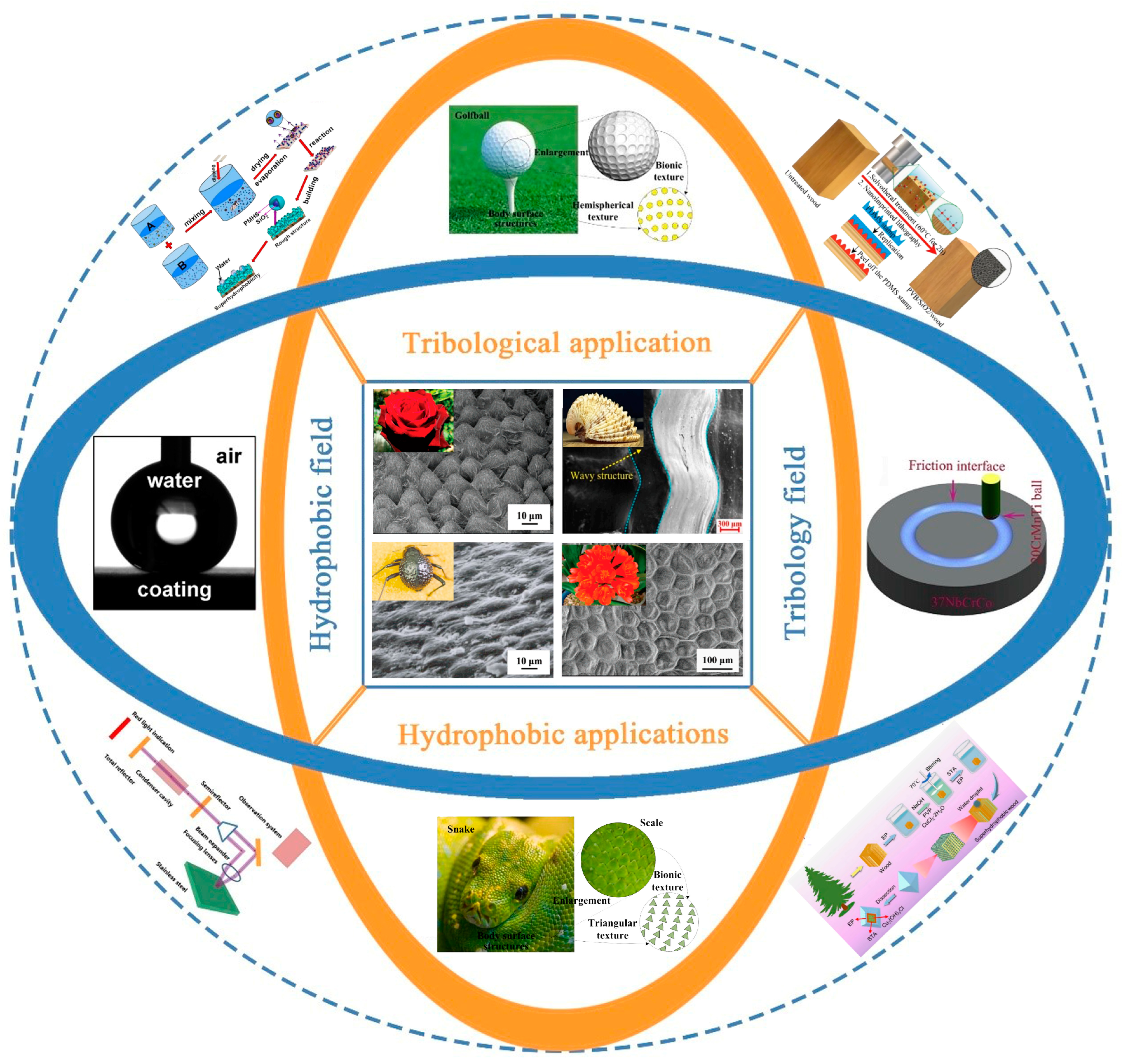
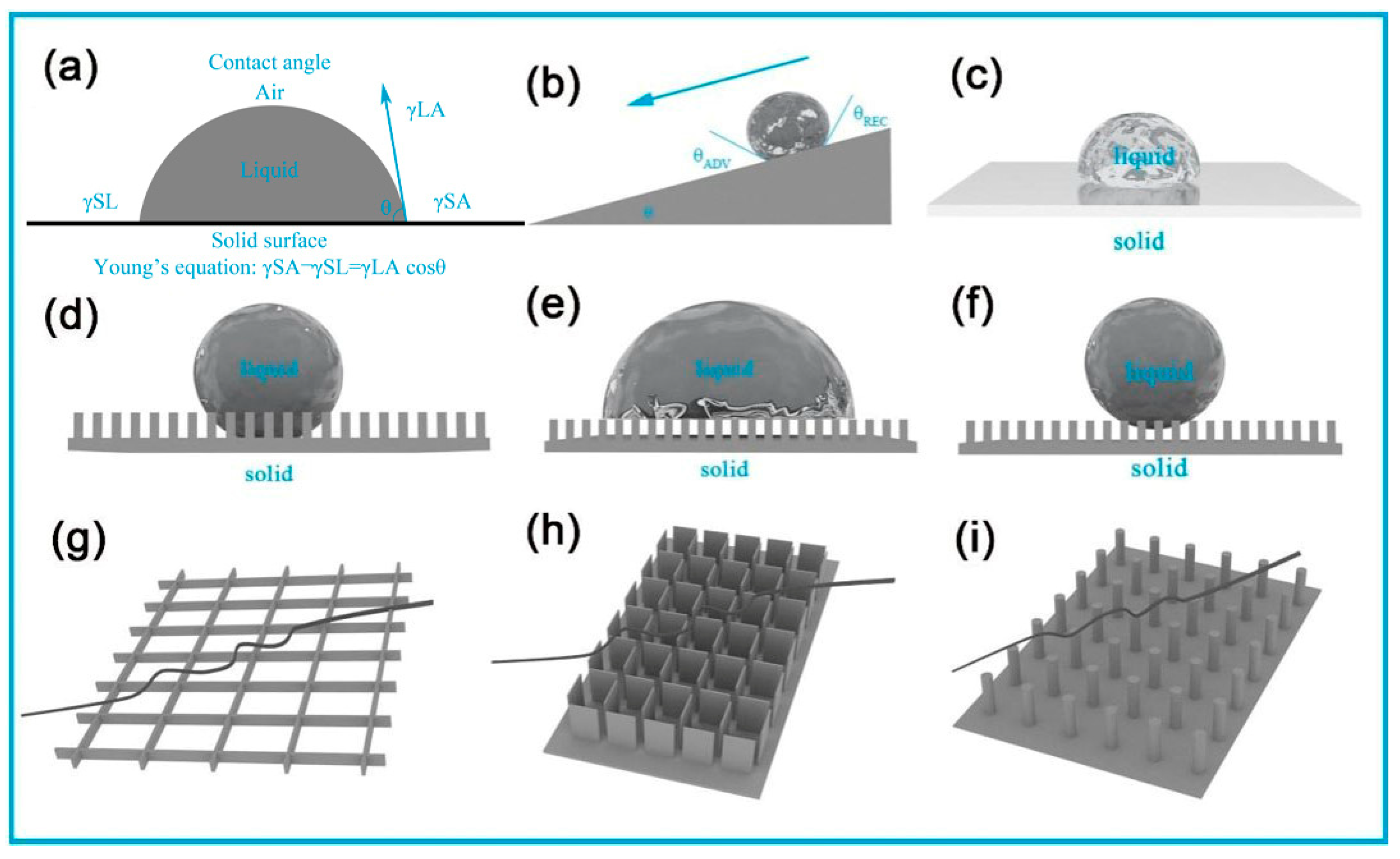
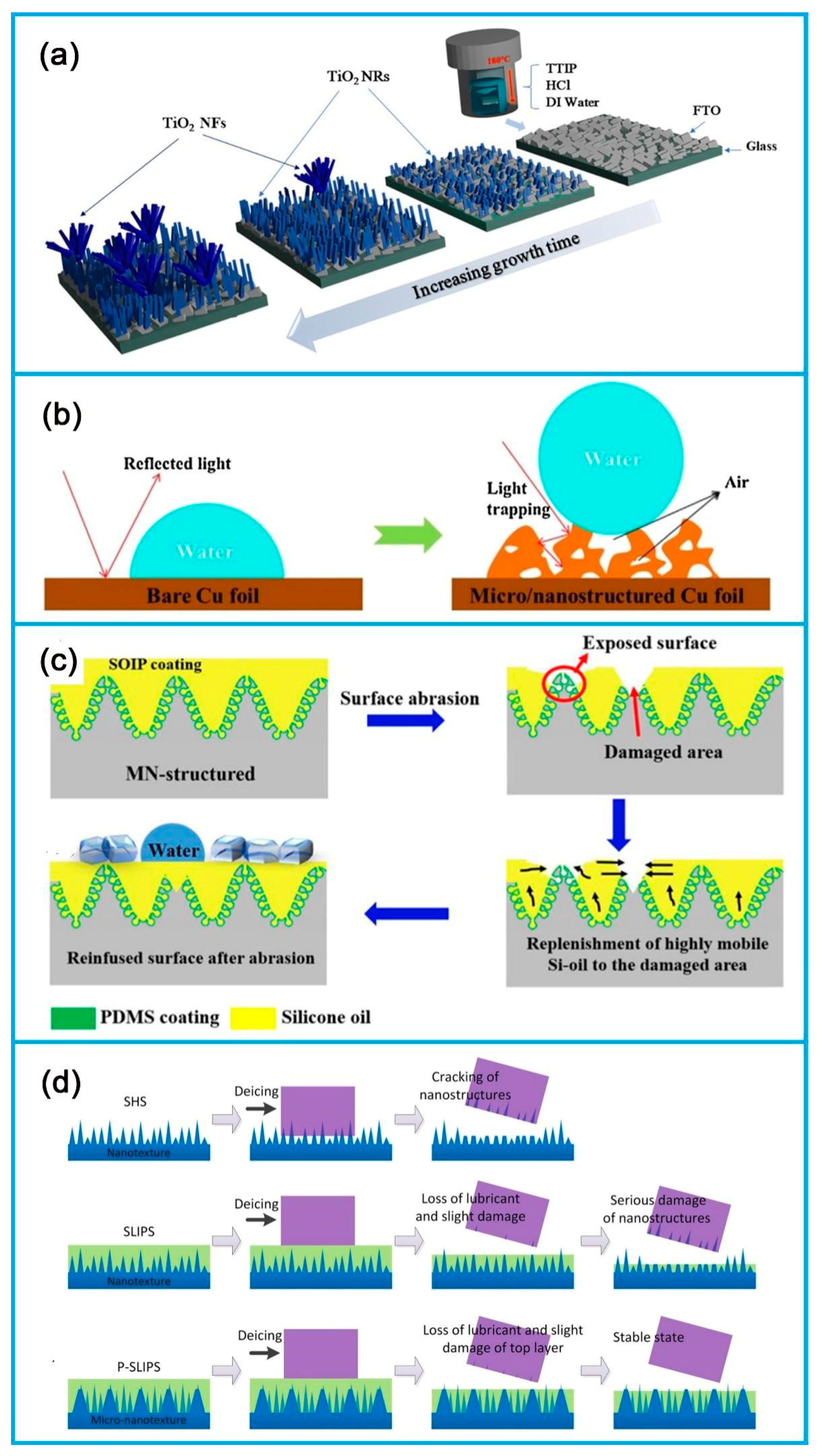
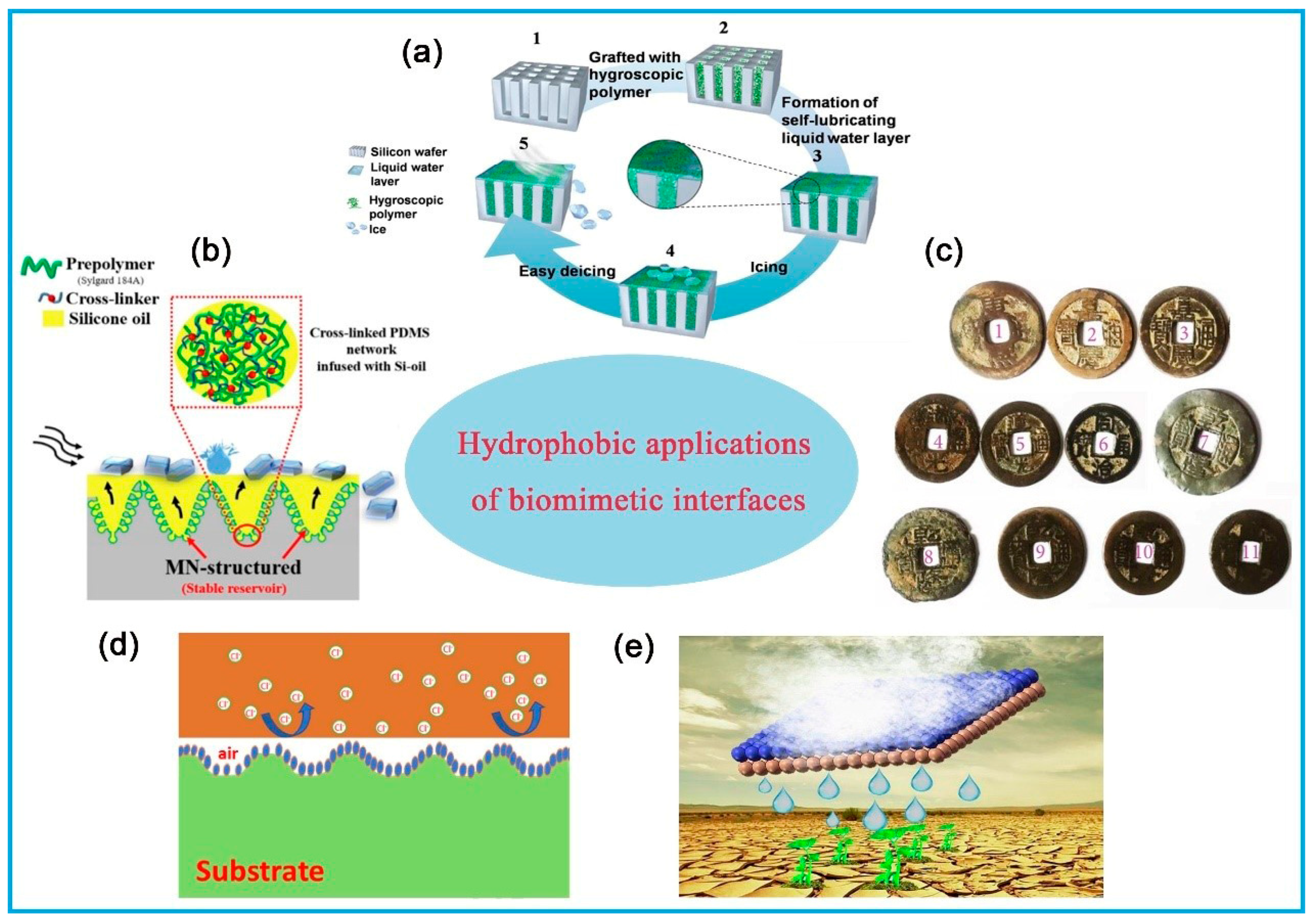

| Static Contact Angles | Infiltration Status | Surface | Illustrations |
|---|---|---|---|
| θ < 10° | Complete wettability | Super hydrophilic surface |  |
| 10° < θ < 90° | Wettability | Hydrophilic surface |  |
| 90° < θ < 150° | Partial wettability | Hydrophobic surfaces |  |
| θ > 150° | Non-wettability | Superhydrophobic surfaces |  |
| Abbreviations or Symbols | Terminology | Unit Symbols |
|---|---|---|
| CA | contact angle | degree |
| SA | sliding angle | α |
| CAH | contact angle hysteresis | ∆θ |
| advancing contact angle | degree | |
| receding contact angle | degree |
Disclaimer/Publisher’s Note: The statements, opinions and data contained in all publications are solely those of the individual author(s) and contributor(s) and not of MDPI and/or the editor(s). MDPI and/or the editor(s) disclaim responsibility for any injury to people or property resulting from any ideas, methods, instructions or products referred to in the content. |
© 2024 by the authors. Licensee MDPI, Basel, Switzerland. This article is an open access article distributed under the terms and conditions of the Creative Commons Attribution (CC BY) license (https://creativecommons.org/licenses/by/4.0/).
Share and Cite
Yang, K.; Tang, J.; Huang, J.; Zhang, H.; Chen, H.; Xiong, Y.; Wang, R.; Wu, C.; Wang, M.; Chen, H. Hydrophobic and Tribological Properties of Biomimetic Interfaces. Coatings 2024, 14, 529. https://doi.org/10.3390/coatings14050529
Yang K, Tang J, Huang J, Zhang H, Chen H, Xiong Y, Wang R, Wu C, Wang M, Chen H. Hydrophobic and Tribological Properties of Biomimetic Interfaces. Coatings. 2024; 14(5):529. https://doi.org/10.3390/coatings14050529
Chicago/Turabian StyleYang, Kang, Jun Tang, Jia Huang, Honglei Zhang, Hao Chen, Yahui Xiong, Ruili Wang, Chao Wu, Meimei Wang, and Hongliang Chen. 2024. "Hydrophobic and Tribological Properties of Biomimetic Interfaces" Coatings 14, no. 5: 529. https://doi.org/10.3390/coatings14050529
APA StyleYang, K., Tang, J., Huang, J., Zhang, H., Chen, H., Xiong, Y., Wang, R., Wu, C., Wang, M., & Chen, H. (2024). Hydrophobic and Tribological Properties of Biomimetic Interfaces. Coatings, 14(5), 529. https://doi.org/10.3390/coatings14050529






